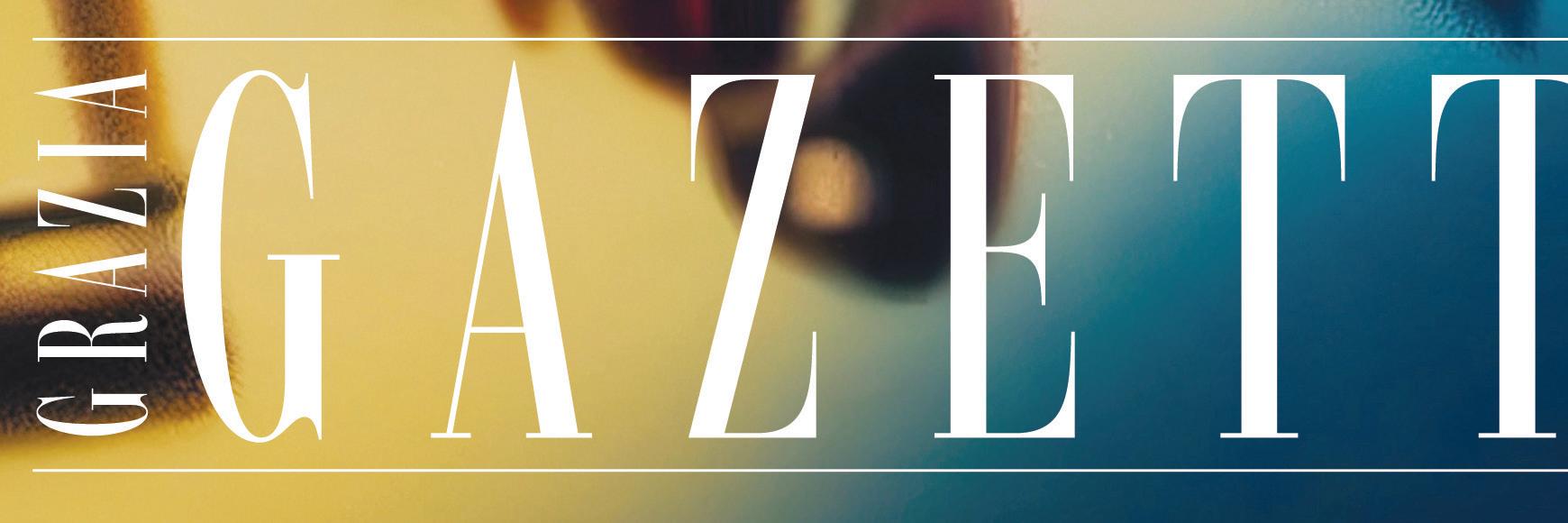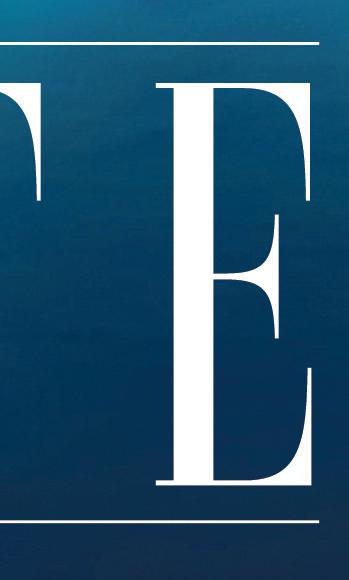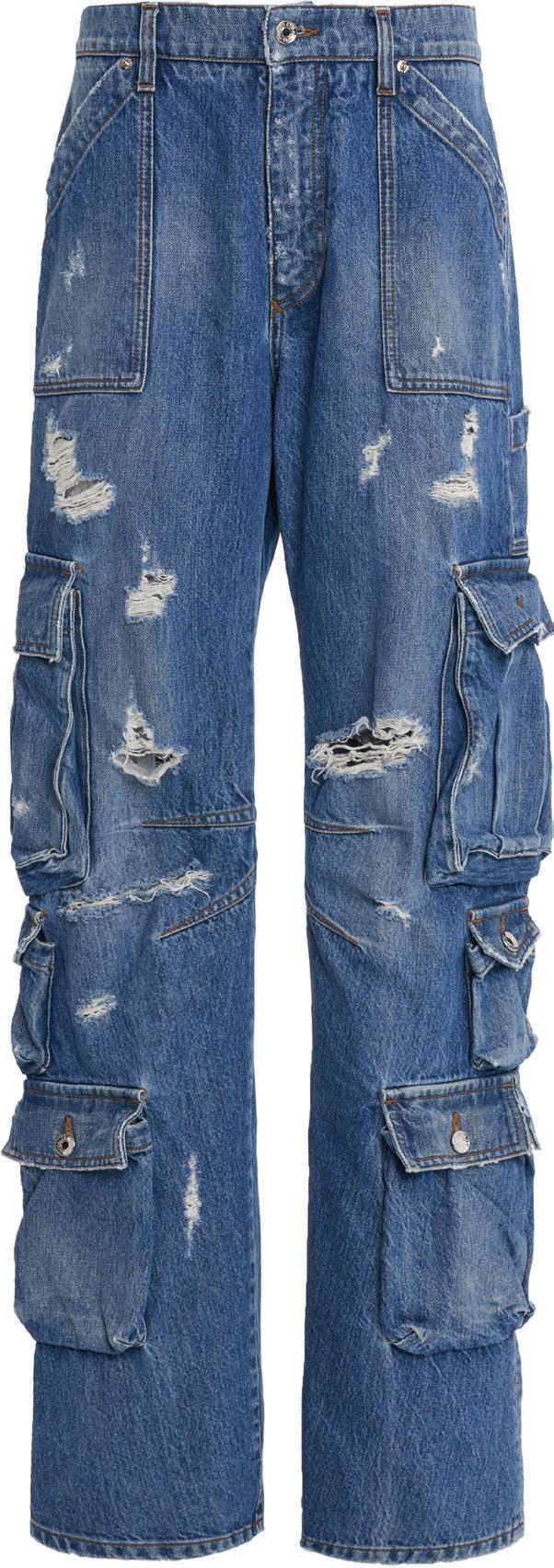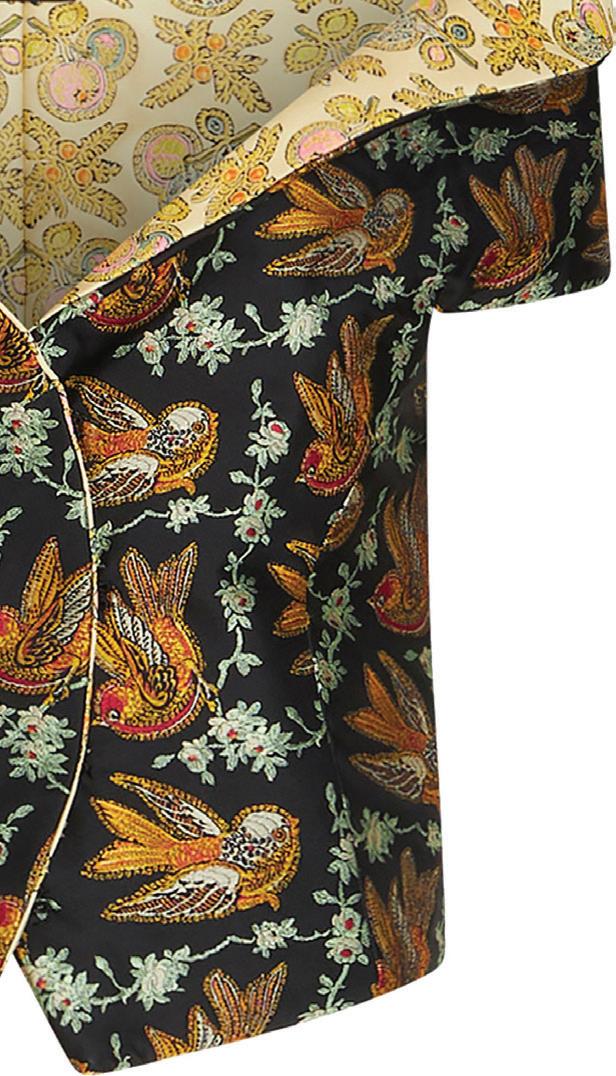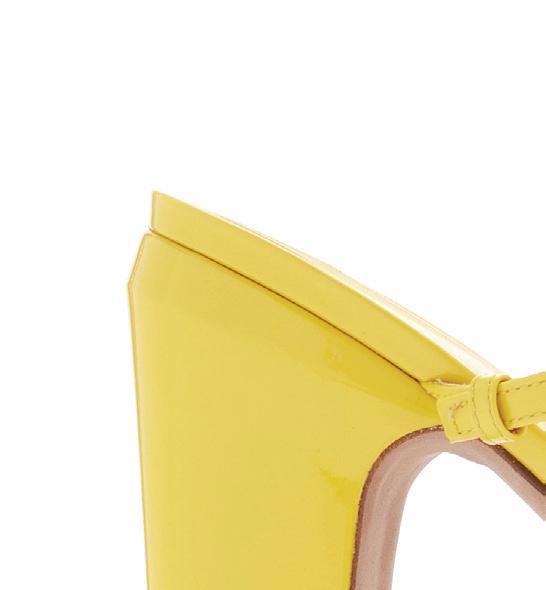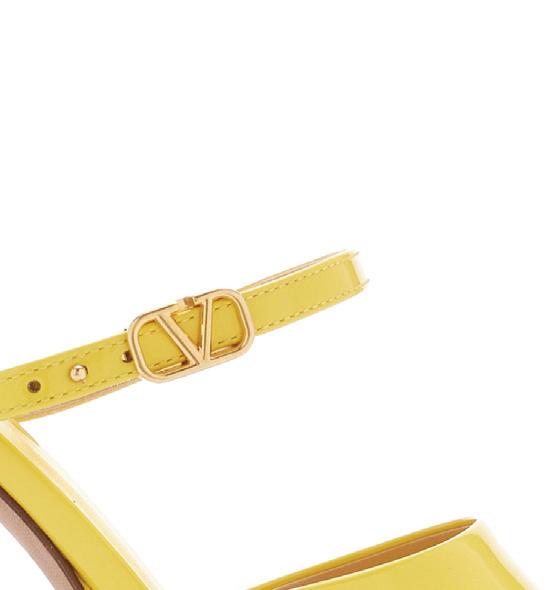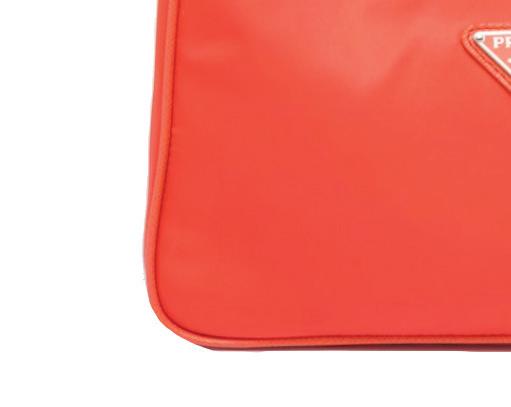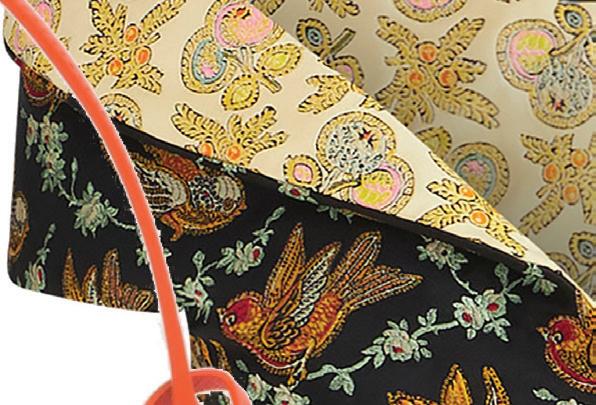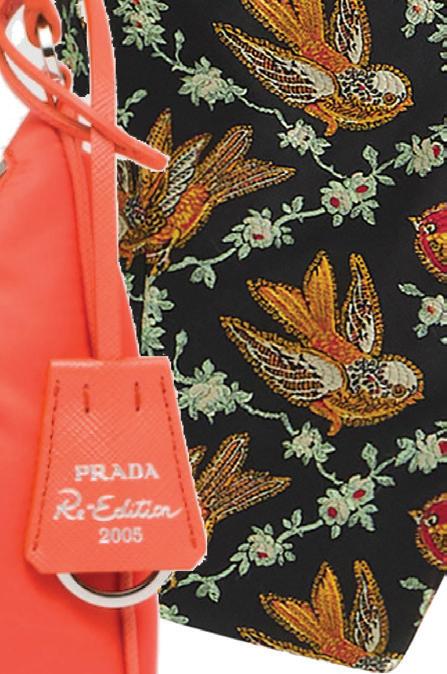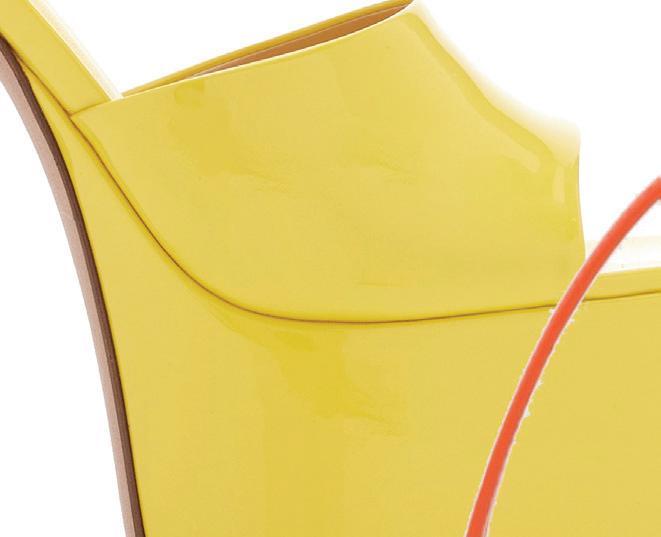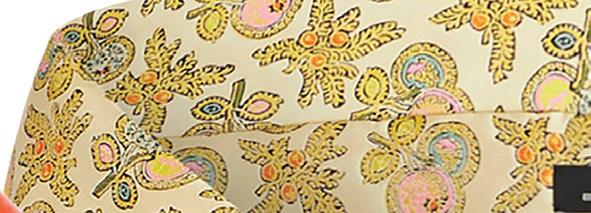


































































































The global event circuit is in full swing — and we are on the inside


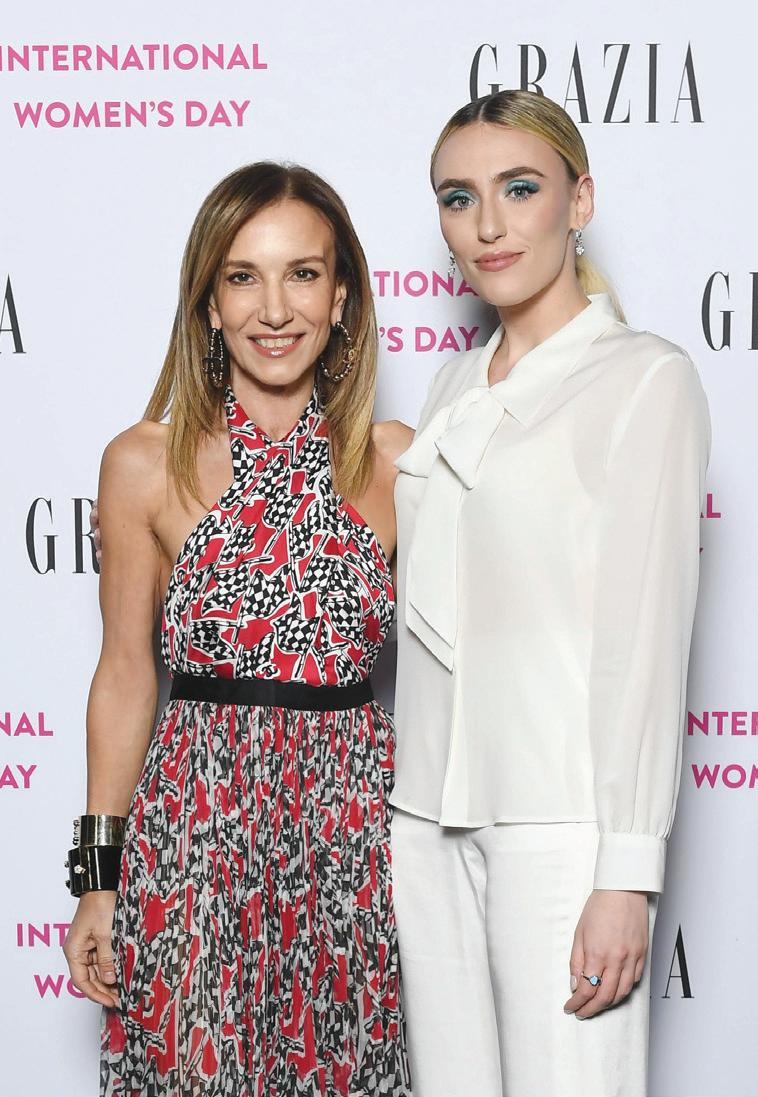

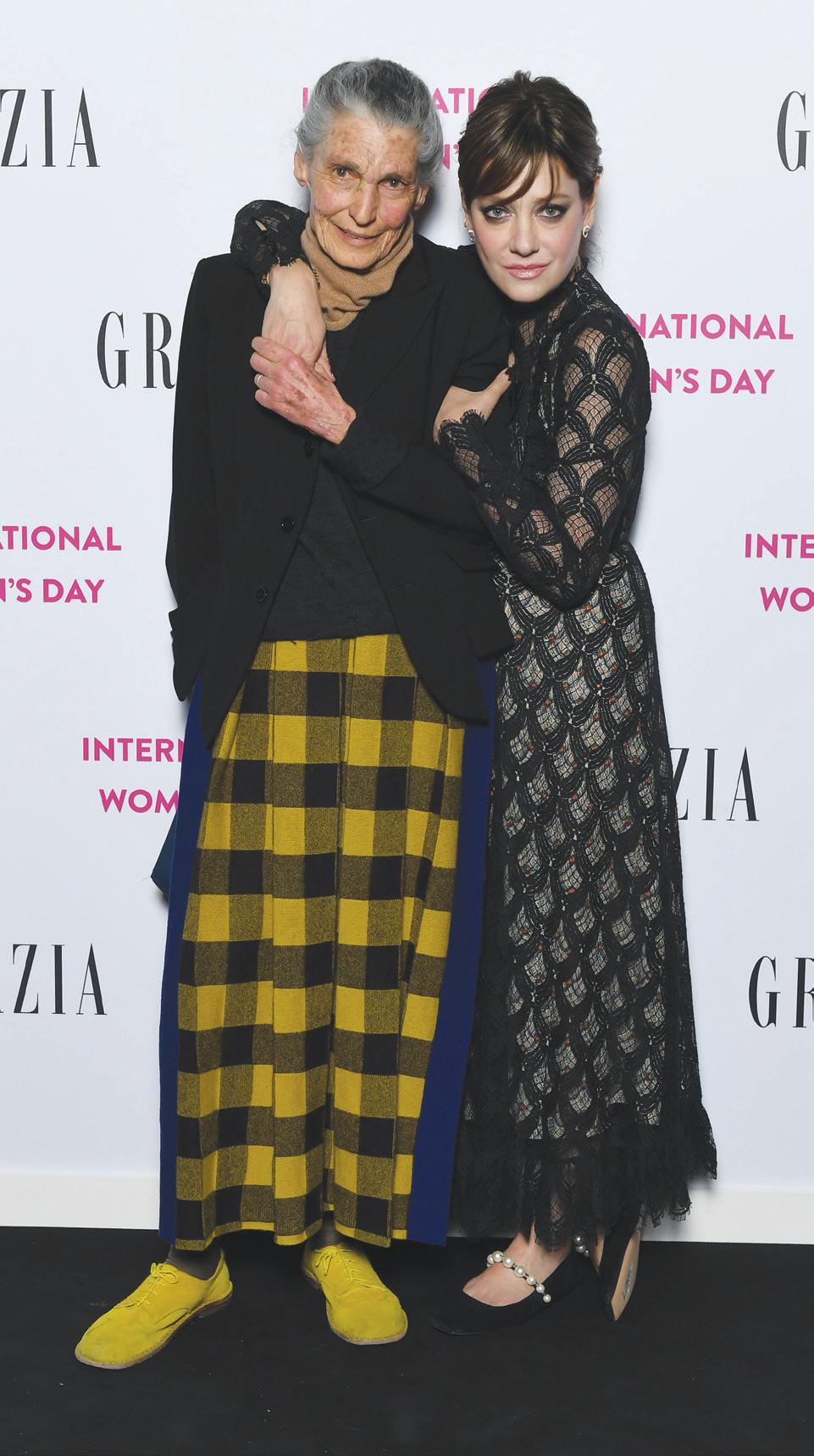
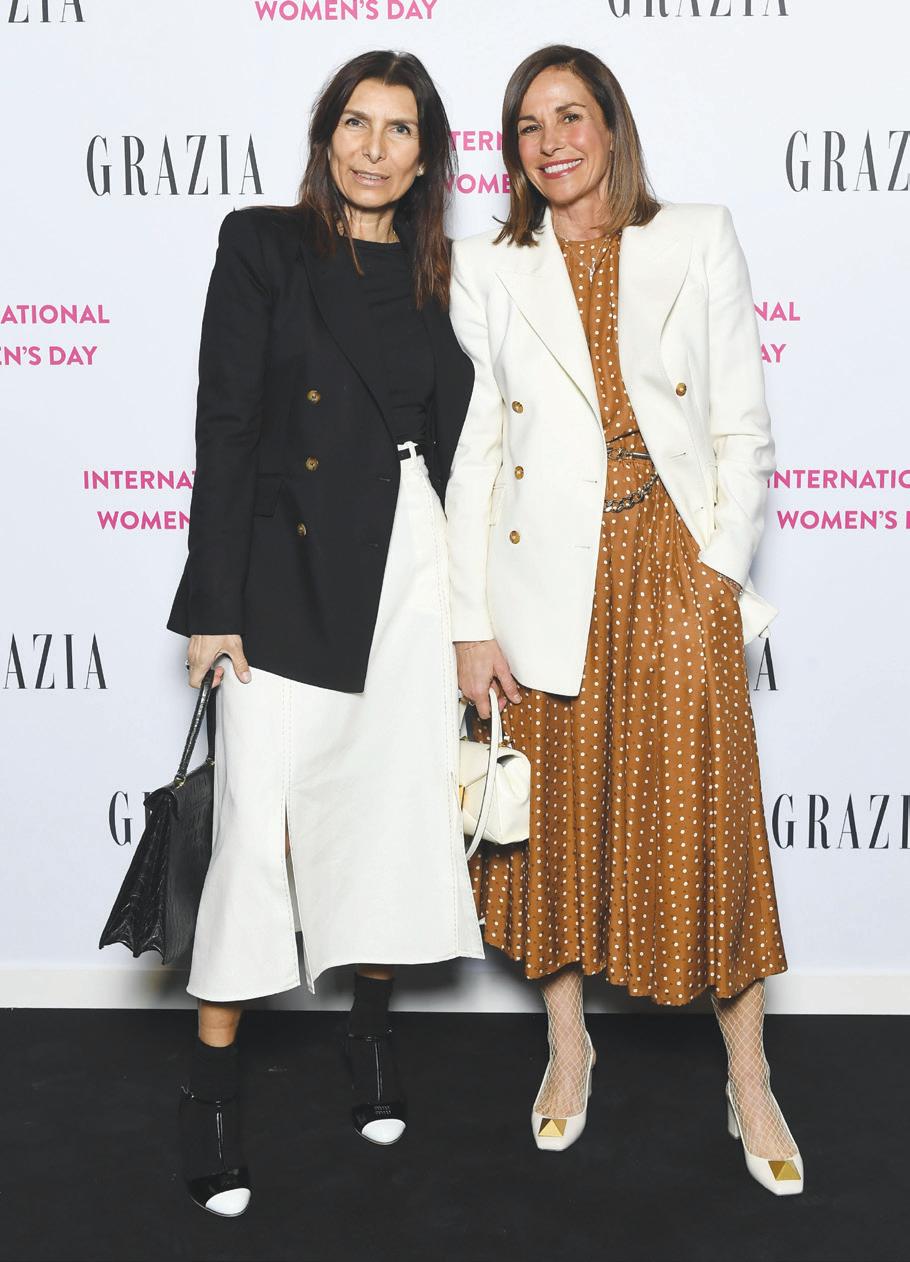


GRAZIA USA’s sister publication, GRAZIA Italy, threw an extravagant event for International Women’s Day at the 1930s Villa Necchi Campiglio in the heart of Milan. The party honored the magazine’s latest cover stars, including model Benedetta Barzini, actress Giovanna Mezzogiorno and singer Mara Sattei, who all hopped on stage to share a song or story during the night.

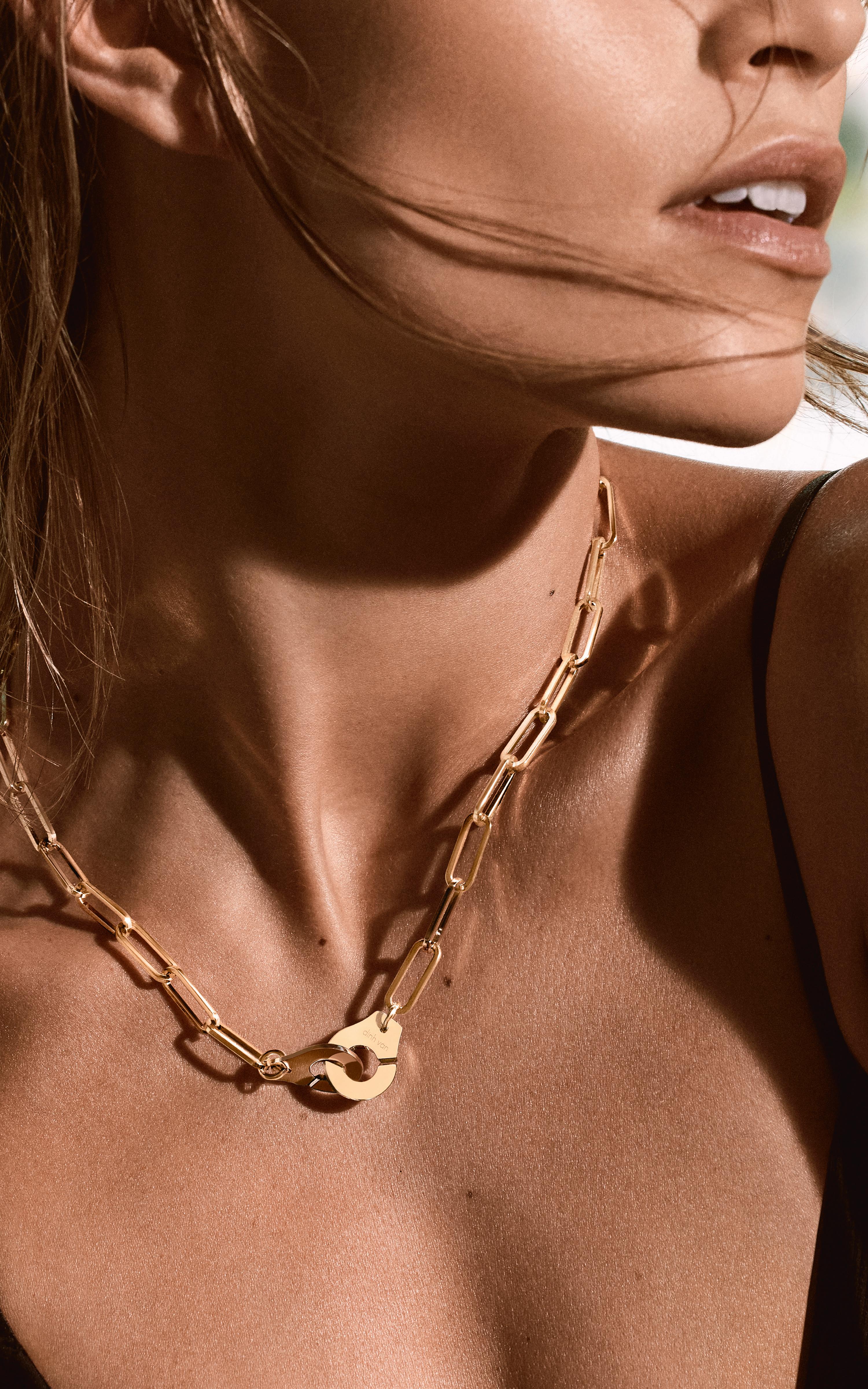
JOSEPH ERRICO
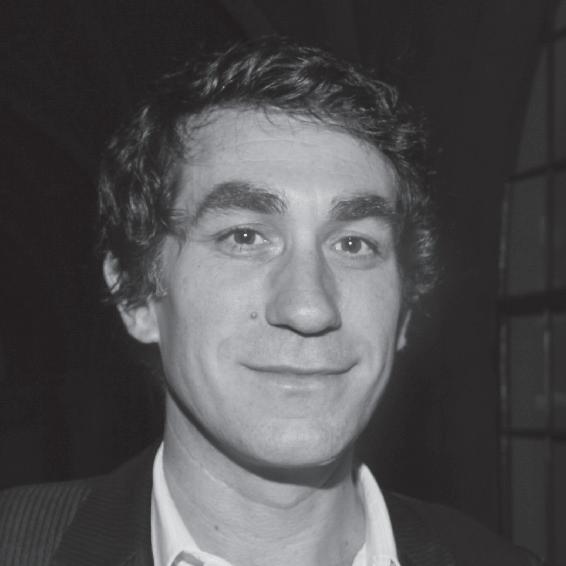
EDITOR & CHIEF CREATIVE OFFICER

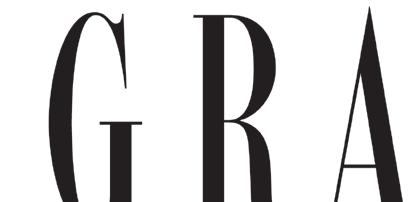

ILARIA SVITIC CREATIVE DIRECTOR
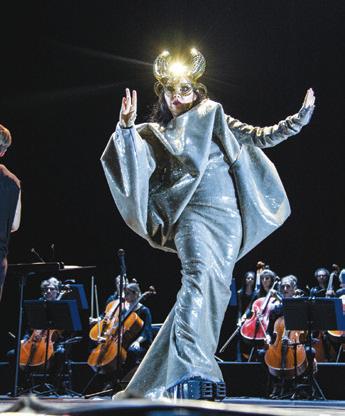
CASEY BRENNAN
EXECUTIVE EDITOR AT LARGE
AARON RASMUSSEN EXECUTIVE EDITOR AT LARGE
COLLEEN KRATOFIL EDITORIAL & DIGITAL DIRECTOR
JACLYN ROTH HEAD OF ENTERTAINMENT
SHELBY COMROE FASHION MARKET EDITOR
HANNAH MILITANO STYLE WRITER
BRENT BOLTHOUSE
Bolthouse is a jack of all trades as an entrepreneur, event producer, DJ, actor and photographer. The Bolthouse Productions mogul is responsible for founding The Bungalow Hospitality Group and all its franchises, including Neon Carnival, the exclusive unofficial Coachella afterparty.
RAISSA GERONA
Chief brand officer for Revolve and FWRD, Gerona is the driving force behind marketing strategy and execution at the e-commerce brands. She’s responsible for pioneering influencer marketing strategy and building a differentiated business through social media and experiential events. She’s also the cofounder of Alliance Apparel, which REVOLVE acquired in 2014.
JESSICA BAILEY INTERNATIONAL EDITORIAL DIRECTOR
CHARLOTTE STOKES FASHION DIRECTOR

GRACE O’NEILL FASHION WRITER
REBEKAH CLARK FEATURES WRITER
ASHLEY PETRIE
Petrie has decades of experience leading fashion teams at the styling service Daily Look and retailers including Karmaloop and Pacsun. Now, Petrie brought her brand-building skills to Fred Segal where she oversees global merchandising and brand development planning for all of the company’s stores.



The entrepreneur is the Chairman and CEO of Atlantic Records. He began his career DJing in Manhattan in the 1980s and established the independent record label Big Beat in 1986. He started working for Atlantic when they acquired his label five years later. Throughout his career, Kallman signed a number of major artists, from Aaliyah and Brandy to Timbaland and more.


As the chief marketing officer at Tao Group Hospitality, Pardasani oversees all corporate marketing initiatives with a special focus on the guest experience. He's responsible for heading the group’s Hollywood expansion and VIP pop-up experiences, such as Tao Desert Nights in Coachella Valley.

A coterie of music mavens and festival heavyweights who embody success, culture, change, and the art of living well


















Coachella returns to the California desert, and GRAZIA Gazette breaks down every can’tmiss performance
 BY JACLYN ROTH
BY JACLYN ROTH
t’s time to gather those crop tops and neon accessories because the iconic music festival Coachella is descending on Indio from April 14 to April 23. This year’s line-up has so many memorable acts that you don’t want to miss a minute of the action.

Bad Bunny, the reggaeton superstar who had the highest-grossing tour of 2022, kicks off the festivities on the first day—and he’s making history as the first Latin American solo artist and the first Spanish-language musician to headline the event.
The other two headliners during the three-day weekend include the South Koren girl group Blackpink (which also marks the first time a K-pop group is closing out the festival), and R&B singer Frank Ocean, who was originally slated to perform in 2020 before the event was canceled due to the pandemic.

Blackpink, made up of members Jennie, Rosé, Jisoo and Lisa, previously played at Coachella in 2019, and they’ve made it clear that continuing to be a part of the historic festival is something they’ve been thinking about for a long time. “Anybody who loves music in Korea would love to go to Coachella, like a dream wish,” singer Jennie has said.
World famous DJ Calvin Harris is also set to make an appearance, but the specific date and time is still TBD. What’s clear is that Gorillaz, Rosalía and Björk are filling up the “returning to the desert spot” with Harris.

Björk, who has largely stayed out of the spotlight, is back with a new album, Fossora, and she revealed there’s one specific person who lured her in to sing at Coachella: Frank Ocean. "He asked me to perform with him, so I am performing right before him; that's the only reason I said yes,” she said.
Becky G, Yungblud and the Kid Laroi are sure to deliver epic moments. Plus, Charli XCX, MUNA, Blondie, Eric Prydz, Dominic Fike and Labrinth will also be taking the stage throughout the memorable twoweek event.
Whether you’re attending in-person or tuning in virtually, this show will have you dancing the day—and night—away.
FLO MILLI
Flo Milli—a prolific rapper known for her lyrics and TikTok viral track “Conceited”—is certain to entertain with her catchy hooks and energetic stage presence. The star rose to fame after her songs “Beef FloMix” and “In the Party” took off on social media, leading the hits to be certified gold by the Recording Industry Association of America.
ETHEL CAIN
Hayden Silas Anhedönia, known professionally as Ethel Cain, is a favorite of President Barack Obama (her hit song “American Teenager” made his annual music playlist). Cain hails from Alabama, and her interesting songwriting technique is sure to make an impression on artists and fans alike.


RAE SREMMURD
The hip-hop duo from Tupelo, Mississippi, was formed by brothers Slim Jxmmi and Swae Lee. In 2015, the performers released their debut album, ScremmLife, which was certified platinum by the Recording Industry Association of America. The pair’s fourth studio album, Scremm4Life had an April 7 drop date—just in time for fans to learn every line before the duo hits the stage.

IDRIS ELBA

Yes, you read that right—the actor, who is also a DJ, will be spinning at the festival. In 2019, Elba previously played a two-hour set at Coachella that featured mostly house tunes. He even hit the DJ booth at Meghan Markle and Prince Harry’s wedding reception in 2018.







Securing the perfect accommodation for Coachella is no easy feat. But thanks to the husband-and-wife duo Dale and Brookelyn Fox, there are plenty of ultraluxe architectural gems throughout Southern California to host the ideal getaway—any time of year. Their boutique hospitality management company, Foxden Hospitality, has four different properties in Joshua Tree, two in Palm Springs, and one located between the two, Whitewater Cabin. There’s even a romantic bungalow in Los Angeles’ Venice Beach for a postCoachella stay to make reentering the real
world a little easier. You may have already seen the couple’s work—Skyhouse, a Joshua Tree property, was featured in Andy Samberg’s 2020 film Palm Springs. Hotelstyle services, private chefs, champagne and caviar tastings, tennis lessons and more are available at locations, and each space is designed to highlight their beautiful modern and luxurious settings. From cozy cabins to quintessential desert ranch layouts, there's no place like a temporary Coachella home sweet home. Visit foxden.com
BY COLLEEN KRATOFIL




Dsquared2 designers Dean and Dan Caten must have been “Jamming” to Bob Marley when they were creating their Spring/Summer 2023 collection. The line features the late reggae pioneer’s portrait, quotes and nods to his home country, Jamaica. The twins used a yellow, red and green color palette and printed some of Marley’s famous quotes onto bags, T-shirts, sweatshirts and even denim, which debuted on the menswear runway last June. One quote from the musician embossed on a piece reads: “The most intelligent people is the poorest people. Yes, the thief them rich, pure robbers and thieves, rich! The intelligent and the innocent are poor, are crumbled and get brutalized. Daily.” Other items are printed with the lines: “Me mustn’t fight for my rights, my rights must come to me. If God didn't want me to sing, I wouldn't have a song to sing." In a cheekier nod to the legendary performer, the back pocket of a pair of jeans boasts the shape of a cannabis leaf. The designers closed the show wearing matching tees featuring hibiscus flowers over a portrait of Marley. The brand officially partnered for the collection with the Bob Marley Foundation, an organization providing aid to vulnerable and underserved communities throughout Jamaica while enacting lasting change. Visit DSQUARED2 Saks Fifth Avenue, 9600 Wilshire Blvd, Los Angeles; dsquared2.com
BY COLLEEN KRATOFILPartying hard at Coachella can take a toll, but you can avoid dehydration and fatigue with a little help from the I.V. Docs. Mobile IV services are available to festivalgoers in need of a little boost, all in the comfort of your own home (or hotel or Airbnb). Services are administered by medical professionals and start at $149. I.V. Docs offer everything from B12 shots and Energy Boost therapy to the ever-popular Dehydration Relief and Hangover Relief. Sounds like the perfect solution for weekend music warriors. Visit theivdoc.com
 BY CASEY BRENNAN
BY CASEY BRENNAN
NEON CARNIVAL

Since its debut 12 years ago, Neon Carnival has become one of the hottest tickets at Coachella—and it’s back for one night only at Desert International Horse Park on April 15.



What better collection to serve as your Coachella outfit inspiration than MOTHER’s Spring 2023 capsule honoring the ultimate rebel, David Bowie in his Ziggy Stardust era? The pieces in the lineup pay homage to the artist’s playful, nonconformist spirit with glittery, sparkly touches throughout. There are colorful graphic tees, which evoke vintage concert clothing with their marquee-inspired images and faded screen prints. Gold stars and the words “The Jean Genie” are emblazoned on the seat of flared jeans, while a cozy cardigan features lightning bolts and Bowie's name splashed across the back. “As a brand rooted in the experiences of growing up in the ‘70s, the opportunity to design with the imagery and iconography of The Ziggy Stardust era felt like a full-circle moment,” said Tim Kaeding, creative director and co-founder of MOTHER. “With this collection, Bowie’s quintessential sense of glam shines through—all with MOTHER’s signature touch.”
REVOLVE REVOLVE Festival (which is a separate entity from Coachella) will be taking place on April 15 and 16.
FRED SEGAL
The iconic Los Angeles-based boutique Fred Segal will be in the desert with a festival-themed pop-up and two events, including a tie-dye booth with Rabôt and a DJ set by MAAD on April 6 and Lost Daze on April 7

SONIC DESERT

On Saturday April 15 from noon to 5 p.m. SONIC Desert presented by Coca Cola will bring a mythical oasis to the Coachella scene.
On festival grounds or out and about in Indio, the pieces look just as cool styled with cutoffs and a fanny pack as they do with a long ‘70s-esque blazer. Rock on! Visit motherdenim.com
BY COLLEEN KRATOFIL

ACCESSIBLE+
Accessible+ is an immersion opportunity for BIPOC people with disabilities to experience Coachella, build community and come together to discuss accessibility and professional opportunities in the music industry. Led by experts and leaders who are a part of the disabled BIPOC community, the mission: to amplify the intersectionality of BIPOC people with disabilities. More details: https://coachella.com/activities
ACTIVITIES TENT
Classic games, video games, dance competitions and more. Stop by the activities tent to keep your mind sharp and win some prizes in the process.
CAMP LOUNGE
Give your hard-working feet a break and chill in the camp lounge. While you’re hanging out feel free to hop on the free Wi-Fi, meet up with friends to review your daily itinerary or even just take a nap in the shade. This is the spot to relax and prepare for a long night or to unwind at the end of the day.
Enter into the euphoric "do it yourself" arts & craft space. Organizers supply all the art materials you could ever dream of and it is completely free. The only trade-off is that you have to make it to take it.
Yoga, fitness and sound baths in the morning, fun and activities by day, non-stop dance party by night and even the famous Silent Disco after midnight. The Dome has become the energy center of Camping. A living breathing piece of art, step inside the dome and allow your mind and body to connect with everyone around you. Please check back in March for a full updated schedule on daily programming. This is where you’ll want to be every day.
The Energy Playground powers up the crowd and charges your phones! The Global Inheritance Energy SeeSaws provides festival attendees the opportunity to learn about energy from the best seat in the house! Outside of earning an extra bar on your phone, the Energy SeeSaws offer people the chance to get the blood flowing and burn a few calories!
Join organizers in co-creating a culture of community care at Coachella. The every one space on festival grounds is a place you are invited to rest, recharge and take care of yourself and others during festival hours. The enclosed every one tent will be staffed with trained counselors for anyone that needs extra support or a quiet moment away, completely free of charge.
Catch all the feels at the top of the iconic Ferris Wheel while taking in the epic desert views of the entire Coachella Valley.


FIELD OF DREAMS
Need your daily dose of friendly competition? Or maybe you just want to swing by and cheer your friends on? The Field of Dreams has become one of our favorite things out in the campgrounds. From the high flying action of dodgeball to the edge of your seat anticipation of giant flip cup.
Leave no bottle, can, or cup behind! Coachella attendees in the main venue and campgrounds trade in bottles, cans, and cups for upgrades, exclusive merchandise, festival experiences, food vouchers, cold water + more. Recyclers even have a unique opportunity to exchange full bags of recyclables for a chance to win a special Coachella prize package during Recycling Sundays. Recycling is an easy opportunity to show that you care while earning a few extra karma points. Don’t forget to test your strength with one of the specialized Can Crushers.
GV BLACK
Organizers commit to continuously evolve as a festival that not only speaks on equity, justice and actively anti-racist change, but acts on it.
HEINEKEN HOUSE
Refresh yourself with Heineken Silver!
POSTED STUDIO
An interactive poster design studio, the POSTed Studio generates crowd-sourced concept art for posters that advocate for solutions to major challenges facing the planet. Coachella attendees create and submit concepts which are then curated and provided to professional artists as inspiration for the fully-realized poster artwork. The resulting collection of POSTed Editions are freely available online for download, and shared across the festival, artists and Global Inheritance’s social platforms.
POSTED STUDIO SPEAKER STAGE
Starting Thursday in Camping: Global Inheritance x Coachella are hosting a special POSTed Studio speaker stage. Format changes based on speakers - from Q/A to Ted Talk format to Show and Tell and Workshops. Expect to see some of your favorite artists and environmentalists talk while
Coachella’s curators scour the globe for artists, architects, and designers to transform the Empire Polo Field. Newly-commissioned, large scale art installations and returning favorites offer fans art as landmark, public space, and icon—to be viewed from perspectives as diverse and dynamic as Coachella’s lineup of performers.
also participating in interactive workshops. All talks will be followed by a POSTed Studio design session where we will give away prizes for the best poster concept based on the most recent talk/workshop.
RECORD SAFARI
Dig into over 25,000 pieces of new and used vintage vinyl while you cool off. Organizers even stash your goods until Sunday. Plus, organizers will carry Record Store Day Exclusives on Saturday April 15.

THE SALON
We know it’s a bit tough to get ready at your campsite. Stop by the Salon in the Camping Hub to use the festival’s full length mirrors, outlets for hair dryers or straighteners and we even have some desktop space for makeup / accessories.
TRASHED COACHELLA -


ART OF RECYCLING

TRASHed Coachella offers talented artists the opportunity to turn ordinary recycling bins into works of art that inspire people across the globe to see the beauty in recycling. Over 50 artists are designing this year’s unbelievable collection which will grace the polo grounds both weekends. Don’t forget to photograph and share your favorites!

THE TURN DOWN
Downtempo Grooves for your Soul. Cheers turn into pillow talk at your own ambient oasis. Kick up those feet, and let the late night grooves recharge your cells. Located in the camping center on the hill in lot 8. Check back closer to show dates for details.

QUEER+
The Queer+ HeadQ+uarters (HQ+) is dedicated to enhancing the festival's all inclusive culture. The festival’s HQ+ will highlight the transcendence of the BIPOC LGBTQ+ community by inspiring individuality, authenticity and eccentricity. The HQ+ will serve as a social gathering space within the festival grounds for BIPOC LGBTQ+ individuals to come and be celebrated. HQ+ will feature multiple interactive, inspirational and archival art projects. We aim to uplift, empower and expand the BIPOC LGBTQ+ Community at the festival. This is a safe space and a judgment free zone.
THE WELLNESS OASIS
Looking to unwind and recharge before attending the festival? To help you connect with yourself and others, the festival’s wellness programming includes daily yoga, meditation, and sound healing sessions. The Wellness Oasis, located next to the Activities Tent, has plenty of space and shade for everyone to relax and participate in the sessions. We have something for everyone, whether you want to stretch and strengthen your body with yoga, find inner peace with meditation, or experience the soothing sounds of sound healing. Sessions are held on Thursday from 5pm to 8pm and on Friday - Sunday from 7am to 3pm. Don't forget to bring a mat!

The festival’s food program features new and exciting restaurants from coast to coast, as well as your favorite staples, offering a wide variety of cuisines (including vegan and glutenfree options) that pleases any festival-goer


DRINKS
Here you'll find the festival’s signature specialty cocktail programs and large Craft Beer selections. Expect to visit new and/or returning favorites from celebrated mixologists across the country. Also featuring Coffees, Teas and Juices plus a selection of non-alcoholic beverages and mocktails.
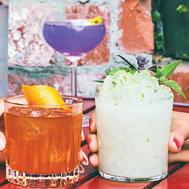
INDIO CENTRAL MARKET
Grab a seat in the shaded food hall and enjoy more than a dozen carefully-curated vendors with various international flavors. Check back closer to festival dates for details.

Outstanding in the Field, the nomadic, farm to table culinary experience, sets its communal table in the tranquil hideaway of the VIP Rose Garden for the eighth year in celebration of local, sustainable farms. Each night, festival-goers can take refuge at the winding 200-person table enjoying a welcome cocktail and a seated, four-course, family-style dinner with wine pairings, served as the sun starts to set.
A new discovery reveals a more expansive Coachella. In 2023, learn how to interact with the Mirage and unlock new festival creativity on the fields and beyond.
April 14 & 21:
Bad Bunny
Gorillaz
Burna Boy
The Chemical Brothers

Kaytranada
Blondie
Becky G
Metro Boomin
FKJ
Pusha T
Tobe Nwigwe
Wet Leg
SG Lewis
Yves Tumor
The Garden
TESTPILOT
Angèle
MUNA
Maceo Plex
Two Friends
YUNGBLUD

Jamie Jones
Ashnikko
Malaa
TV Girl
Whyte Fang
Doechii
Benee
Idris Elba
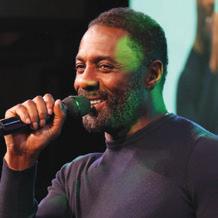
Magdalena Bay
Vintage Culture
Domi & JD Beck
Dombresky
DannyLux
Nora En Pure
Overmono
Uncle Waffles
¿TÉO?
Mochakk
Gabriels
Saba
Dennis Cruz + PAWSA
Soul Glo
Lava La Rue
Sleaford Mods
The Comet is Coming
Oliver Koletzki
Kyle Watson
The Murder Capital
Chris Stussy
Jupiter & Okwess
Lewis OfMan
April 15 & 22:
BLACKPINK
Rosalía
Eric Prydz Presents HOLO
Boygenius
$uicideboy$
The Kid LAROI
Charli XCX
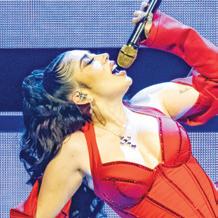
Labrinth

Underworld
Diljit Dosanjh
Eladio Carrión
SOFI TUKKER
Remi Wolf
Chromeo
Tale Of Us
Yung Lean
Mura Masa
Yaeji
070 Shake
Marc Rebillet
Hiatus Kaiyote

Dinner Party
Los Fabulosos Cadillacs
Elderbrook
Kenny Beats
Flo Milli
Keinemusik
Snail Mail
Rebelution
Hot Since 82
EARTHGANG

UMI
Shenseea
The Breeders
Monolink
Ethel Cain
Bakar
Donavan’s Yard
The Linda Lindas
Sunset Rollercoaster
NIA ARCHIVES

Jan Blomqvist
DRAMA
WhoMadeWho
Destroy Boys
Elyanna
DJ Tennis + Carlita
AG Club
Mathame
BRATTY
Horsegirl
Colyn
April 16 & 23:
Frank Ocean
Björk
Kali Uchis
Porter Roinson
Fisher + Chris Lake
A-Boogie
Dominic Fike
Jai Paul
Jackson Wang
Latto
The Blaze
Willow
GloRilla
Jai Wolf
Boris Brejcha
2manydjs
Christine and the Queens
Rae Sremmurd
Weyes Blood

Alex G
DPR LIVE + DPR IAN

Stick Figure
Adam Beyer
Big Wild
MK
Cannons
Romy
Gordo
Fousheé
Noname
Sasha & John Digweed
Sudan Archives
Knocked Loose
Camelphat
IDK
Sasha Alex Sloan Mareux
1999.ODDS
Pi'erre Bourne
Cassian
Joy Crookes

TSHA
El Michels Affair
Paris Texas
LP Giobbi
Momma
Ali Sethi
Minus the Light
Los Bitchos
Conexión Divina
Airrica
Mirages have long been a desert mystery. Once thought to be optical illusions, we have now come to learn that these distortions are rifts to another layer of the festival. Energized by the collective creativity of festival fans and artists, this new layer holds many surprises waiting to be uncovered.
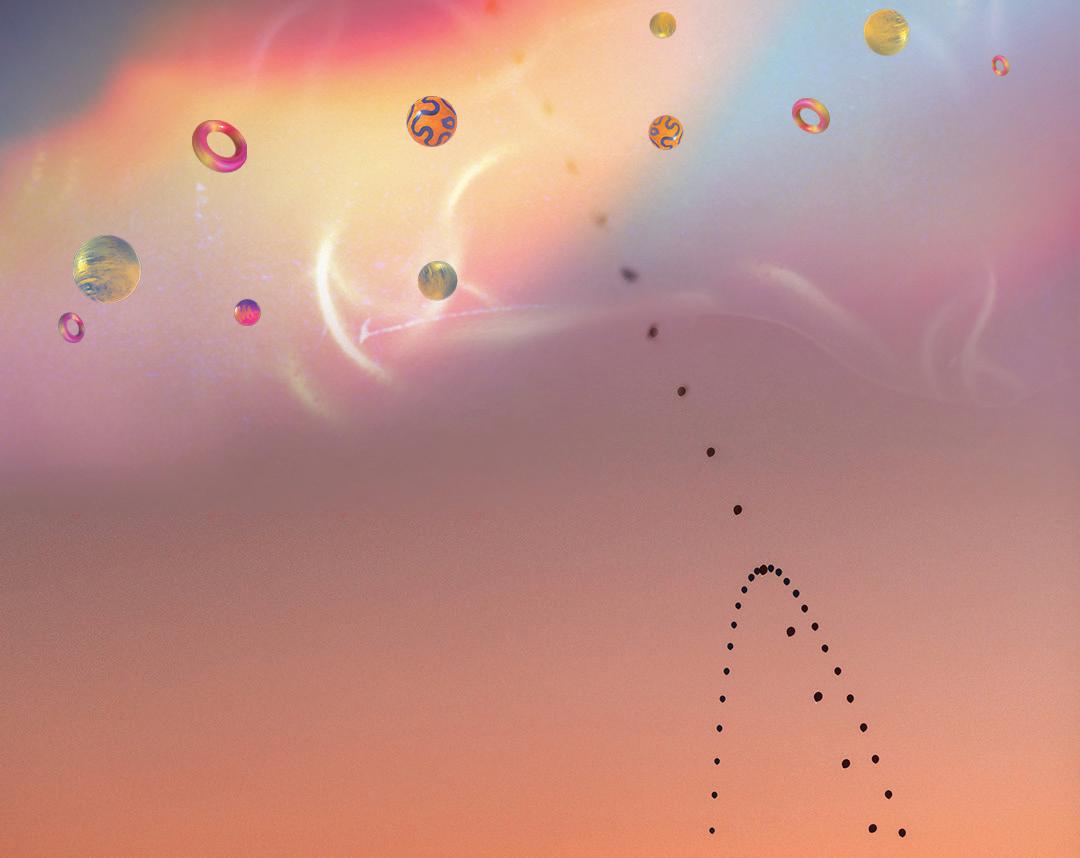
Juliet Mendoza
Desert Cahuilla
Bird Singers
Chloé Caillet
Scowl
Francis Mercier
From headliners to up-and-coming artists, these are the shows you don't want to miss
















Music festivals are all about the music, right? Not quite. As the star-studded turnstile at Coachella over the years has proven, it's all about the fashion, too. And it's not just crop tops, short shorts and flower crowns. Take center stage and lean into the boho vibe with textured pieces such as crochet accessories or items with elements of embroidery.




 BY SHELBY COMROE
BY SHELBY COMROE



Cou Cou Intimates dress, $85, briefs, $31, coucouintimates.com; Jennifer Fisher earrings, $850, bangle set, $245, jenniferfisherjewelry.com; Ganni boots, $725, saksfifthavenue.com; Bottega Veneta bag, $1,950, bottegaveneta.com; Ray-Ban sunglasses, $163, ray-ban.com.
Orseund Iris bustier, $725, orseundiris.com; Agolde shorts, $150, modaoperandi.com; Bottega Veneta belt, $590, modaoperandi.com; Jenny Bird earrings, $120, bracelet, $140, jenny-bird.com; Comme Si socks, $12, commesi.com; Adidas sneakers, $165, adidas.com; The Attico sunglasses, $267, farfetch.com.
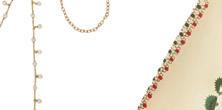



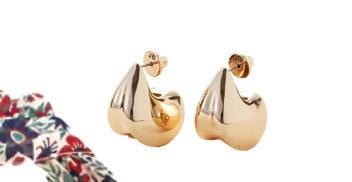

La Prairie Cellular Swiss UV Protection Veil Sunscreen, $235, laprairie.com.











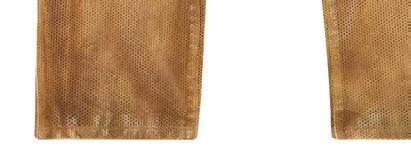

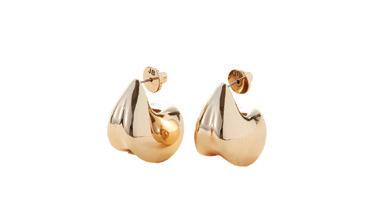



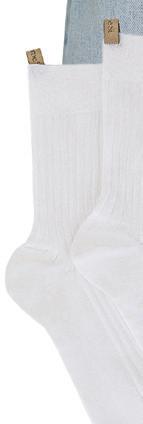








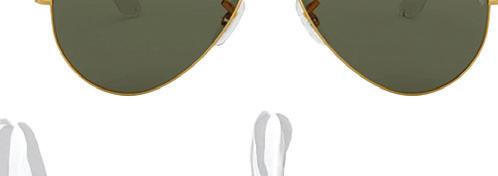

Saie Sunvisor, $38, saiehello.com.



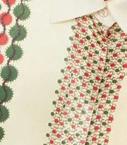




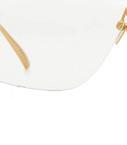

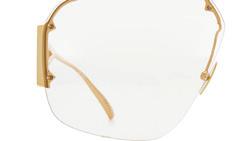


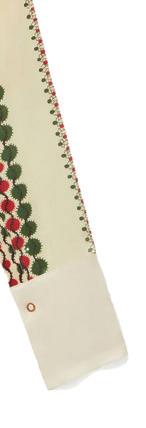



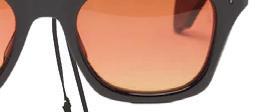














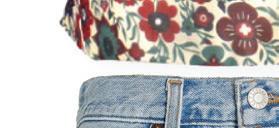







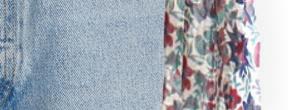
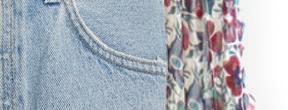

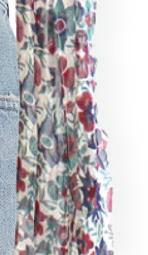



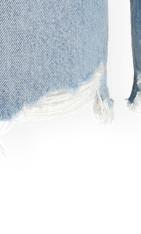

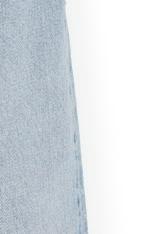

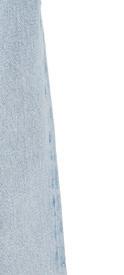



Wales Bonner shirt, $895, nordstrom.com; Live The Process bra, $108, luisaviaroma.com; Miaou skirt, $99, miaou.com; Tropic of C x Jacquie Aiche body chain, $195, belly chain, $195, tropicofc.com; Comme Si socks, $12, commesi.com; Onitsuka Tiger sneakers, $100, onitsukatiger.com; Bottega Veneta sunglasses, $550, modaoperandi.com.
Khaite top, $548, luisaviaroma.com; Diesel pants, $850, shop. diesel.com; Dsquared2 belt, $280, dsquared2.com; Lisa Says Gah necklace, $48, lisasaysgah.com; Frye boots, $458, neimanmarcus. com; Fendi bag, $3,190, fendi.com; Jacques Marie Mage sunglasses, $639, matchesfashion.com.
La Mer The Broad Spectrum UV Protecting Fluid, $105, cremedelamer.com.


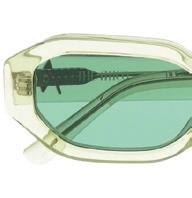
Supergoop! Unseen Sunscreen, $48, supergoop.com.


La Roche-Posay Anthelios Mineral Ultra-Light Sunscreen Fluid, $36.99, dermstore.com.








Dr. Barbara Sturm Sun Drops, $60, drsturm.com.














A trip to the desert isn’t complete without the perfect denim outfit, and we suggest doubling down by pairing an embellished jacket with matching miniskirts or wide-leg jeans





When Elvis Presley married his wife Priscilla Presley in a hush-hush Las Vegas ceremony in May 1967, he didn’t whisk his new bride away to Paris or Bora Bora. Instead, the King of Rock ‘n’ Roll departed for another desert town— Palm Springs—where he and Priscilla holed up in a chic hideaway dubbed the “House of Tomorrow” because of its futuristic design and chic décor.
During the swinging ’60s, Palm Springs was a home away from home to many entertainment luminaries, including Frank Sinatra, Sammy Davis Jr., Cary Grant and Marilyn Monroe. The house at 350 Ladera Circle at the base of the San Jacinto mountains first caught the eye of Elvis the year he married, when he plunked down $21,000 to rent it for a year—a steep sum at the time. (By comparison, last October, the residence hit the market for $5.6 million.)
The couple, who first met in Germany in 1959 when Elvis was 24 and serving in the Army and Priscilla was just 14—originally planned to hold their nuptials at the house but switched the ceremony to the Alladin Hotel in Las Vegas after the press caught wind of their plans.
It’s easy to see why The King fell for the nearly 5,000-square-foot spaceshipshaped mid-century home in the Vista Las Palmas neighborhood. Spread out over three floors and made up of four circles joined together in the middle, the home features four bedrooms and five bathrooms. Floor-to-ceiling windows throughout the property offer stunning views of the mountains and palm trees. There’s a pentagon-shaped pool as well as a tennis court and even a fruit orchard, all hidden by trees and lush landscaping—ideal for a couple wishing to keep a low-key profile.

Now unofficially nicknamed the “Elvis Honeymoon Home” by fans, the William Krisel design has stone walls lining the living room with built-in seating and a suspended fireplace that opens to a raised dining area. The bright kitchen has a round stove in the center of the room—very avant-garde for the time.

It’s been said that Elvis and Priscilla likely conceived their only child, Lisa Marie Presley, in the home. She was born just nine months after the wedding and tragically died in January at age 54 after suffering cardiac arrest. The couple stayed married for six years before divorcing in 1973 and Elvis died four years later in 1977 at age 42, also from cardiac arrest.

Once owned by Elvis Presley and the scene of The King’s honeymoon with Priscilla Presley, this mid-century Palm Springs mansion has a quirky circular layout. Need a break from the festival? Take a guided tour


 BY CASEY BRENNAN
BY CASEY BRENNAN

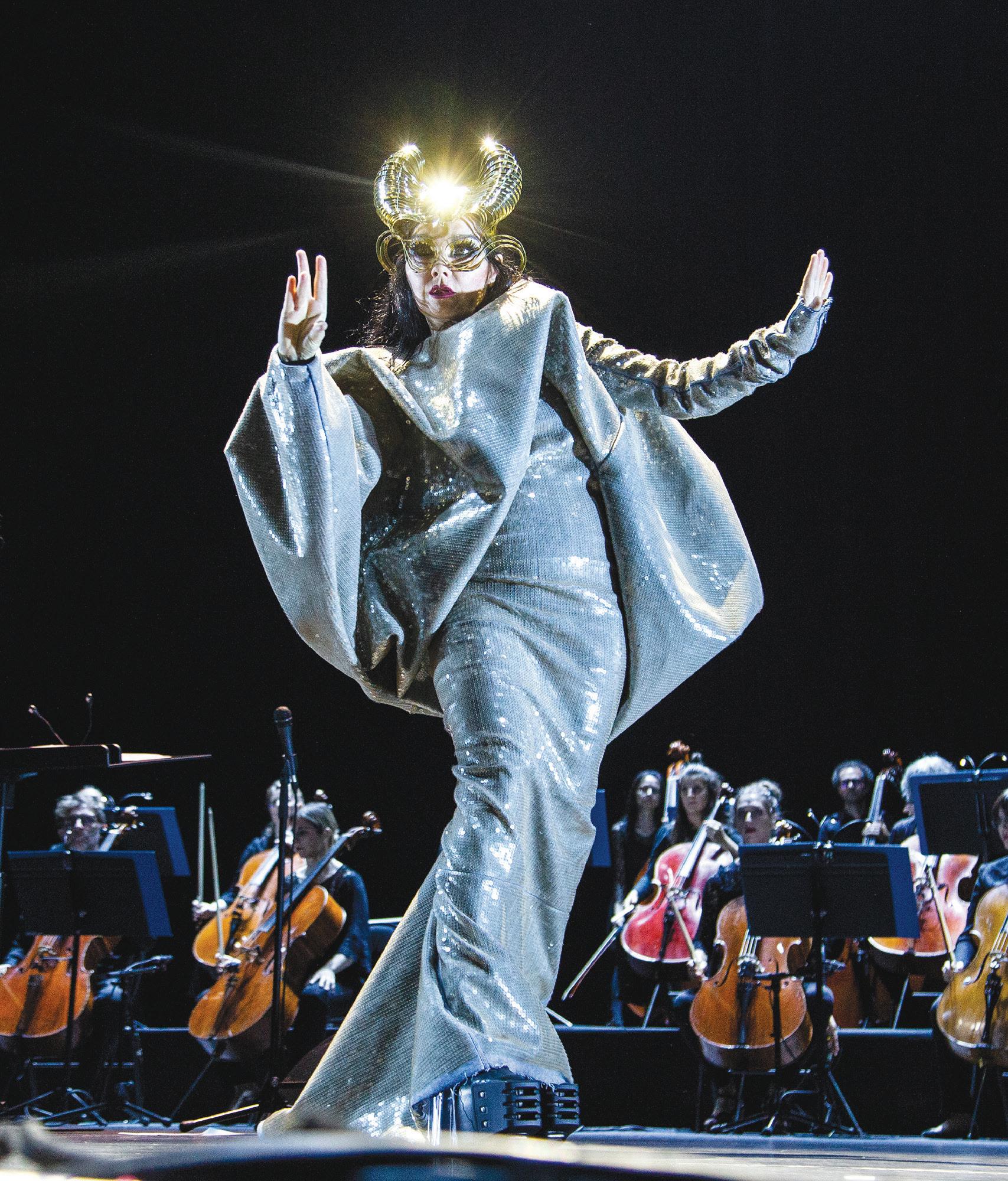
From surprise guests to tech-y tricks, here are some of the most memorable Coachella moments over the years.
Coachella has become one of the most anticipated music festivals in the world, and it got its start when Pearl Jam boycotted venues controlled by Ticketmaster and performed at Empire Polo Club in Indio in 1993. Concert promoter Paul Tollett helped find the space and after the concert's success, he came up with the idea to hold a larger festival on the grounds. The rest is music history.

After spending nearly two years back in her home country of Iceland where she DJed to small crowds and had a small role in The Northman alongside Alexander Skarsgård, Björk is ready to take the music world by storm—in a way only Björk can do. First, she released her new 10th studio album Fossora in the fall and now after 16 years since her last Coachella performance, the 57-year-old is returning to the desert stage with all of her greatest hits. For her sets on Sunday, April 16 and April 23, Björk will go back through her three-decade discography accompanied by a local orchestra, for a performance that fans won’t forget.
It was a major win when organizers snagged Prince for the 2008 festival—and fans were left in awe by the song set, which included hits like “1999,” “Cream,” and “Purple Rain,” plus a powerful 8-minute-long rendition of Radiohead’s “Creep.”


The Icelandic singer is back at Coachella after a long hiatus—and her career-spanning orchestral set is sure to be unforgettable
Peter Reynolds: I have to ask about The Northman. What made you join the cast?
BJÖRK: Well, Robert Eggers, the director, came to Iceland and I introduced him to a friend of mine, Sjon, and then they kept in touch, and I didn’t know but two years later they wrote a whole film script. I was accidentally some sort of godmother of the film, and they asked me if I wouldn’t want to appear in it. At first I said, “No, I’m not really interested, sorry. I don’t want to brag but I’ve been offered quite a lot of big roles through the years and only said no to them.” And Sjon asked again, and I guess we have this unwritten contract where if we ask each other something we say yes. And then when he asked me to be part of this film I said yes as a favor to him. TO be fair, it was only one day of shooting so The Northman only took one day out of my life so not a big sacrifice to be honest.
PR: How did it feel to be an oracle?
BJÖRK: I had a wonderful day. Robert is amazing to work with; he’s very fertile and very vibrant and a wonderful director. Also, my scene was with Alexander Skarsgård and we filed until eight in the morning or something. It was very tough to shoot in this sense and he was wonderful to work with and incredibly helpful to me.
PR: What made you pick Fossora for the title? And if that’s the female version of the Latin word for digger, what are you digging for?
BJÖRK: Well in this case, it was sort of what 7 billion people were doing together. We were sort of quarantining and digging a hole in the ground—obviously not literally but more sort of emotionally—where we were shooting down roots because we were in the same spot for so long. It's like making this little nest with your loved ones and friends and coworkers and family and digging into the ground, into the soil and shooting down roots.
PR: Then the artwork pretty much sums up the album, doesn’t it?
BJÖRK: Yeah, I asked for a set. We built the set and took photographs so it would look like I was underground. Also, the crouching position of my body, it’s this kind of grounding position. Also, the colors, this kind of dark, dark green and dark, dark red are very earthy colors. The plants, they kind of stand for all the music and the growth that happened underground, that it was a very fertile sort of environment. A hopeful environment.
PR: As your last albums came with apps, specially developed instruments, and other technological gadgets. Why are you shying away from that this time around? Or is that on purpose?
BJÖRK: I made an app for myself where I can—now because I write most of my songs walking outside and I wanted to be able to hike outside and make chords while I’m walking, in the moment. This is something I’ve never been able to do before, so there are sone songs written with this app so it was more selfish. You know, I think this is quite exciting where we are with technology now with Zoom and everything, its everywhere. It’s like for everyone. And first time in human history, 7 billion people are watching the same TV shows, the same Netflix and I find that very, very interesting. That’s ground-breaking, in a way.
PR: And Gabber Modus Operandi? How did you find out about these guys from Indonesia?
BJÖRK: Well, like I said, I am always sort of online looking for new stuff and I discovered them three or four years ago and I was listening to them especially in the pandemic when I didn’t only DJ in my living room but I also DJ’d a couple of places downtown when we had moments of where the rules loosened up a bit in the middle of the pandemic. We did a couple of DJ nights in the buildings where only a few—maybe 50—people could be. I just thought it was really interesting every time I was DJ-ing and then every time I would put them on, people would really start to dance and everybody would run to the dancefloor. I think maybe they just have a rawness that I love and the fact that they are mixing together gamelan rhythms, which is authentic for them, of course, and then putting techno sounds on it so you have this half speed and then double speed. Something in me wanted to go really rough and raw and move away from this kind of technological sort of perfection, to be more messy.
PR: What made you come up with Troll Gabba? Do you think that’s what trolls are listening to when they party?

BJÖRK: Well, I know I listen to it when I’m a troll. I think we’re all trolls sometimes, you know? Sometimes we feel like a troll and sometimes we feel like a delicate cat or bird. I think when we feel like a troll, we want to just jump up and down with our fist in the air and get some cathartic release. I think it’s important to dance regularly, all the way to your old age. I think it’s important to have that as part of your lifestyle.
PR: That’s exactly what we were missing for two and a half years. We couldn’t go out and dance at all.
BJÖRK: Well, at least you can dance in your living room.

Never one to shy away from controversy, Madonna stunned Drake during their 2015 performance when the Queen of Pop engaged in a serious onstage make-out session with him, prompting Drake to exclaim “What the f*** just happened?” to the equally shocked crowd.
Although she wasn’t officially scheduled to perform, Calvin Harris brought Rihanna out for a surprise appearance during the 2016 event, and the duo performed their hit single “We Found Love” for the enthralled crowd.

Here are excerpts from a recent interview with Bjork as she prepares for her return to the Coachella stage.
AXL ROSE STAYS SEATED
After breaking his foot during a set at L.A.’s Troubadour just weeks before the 2016 festival, Guns N’ Roses frontman Axl Rose was forced to belt out hits like “Paradise City” and “Welcome to the Jungle” while sitting down.
BEY SLAYS

Beyoncé postponed her 2017 appearance after getting pregnant with twins Rumi and Sir, then made history in 2018 as the first Black woman to ever headline Coachella. She gave a star-studded performance during her set, bringing out former Destiny’s Child members Kelly Rowland and Michelle Williams as well as her sister Solange and rap star hubby Jay-Z as surprise guests.


WHEN HARRY MET SHANIA
Pop sensation Harry Styles made headlines for his unlikely Coachella surprise guest during his 2022 set— country music star Shania Twain. The pair performed a duet of her hits “Man! I Feel Like a Woman” and “You’re Still the One,” which sent fans into a frenzy.

I listen to a lot of classical music and contemporary classical. I listen to a lot of folk music from around the world, I listen to a lot of R&B and I listen to a lot of experimental electronic music, and then I will listen to brutal techno. I like dynamic; like music that I listen to to be quite dynamic.
PR: If we talk about the lyrics: to what degree is this album influenced by the passing of your mother, Hildur, especially songs like "Sorrowful Soil" and "Ancestress?”
BJÖRK: Yeah, these two songs are written about my mother. "Sorrowful Soil" was written maybe a year and a half before she passed away, so it's sort of when me and my brother discovered that this was the last chapter in her life, and so it has a lot of sadness in it. I feel "Ancestress,” the later song I wrote about her, that was written after she left us and it's more sort of about the celebration of life and kind of how like the Irish or the Mexican people look at funerals as an opportunity for celebration. There is some sadness there, of course, but it's mostly this sort of celebratory celestial ritual when you are saying goodbye to a soul.
PR: How much of a role model was your mother to you?
BJÖRK: Hmm, well this is a big question. I can’t remember what poet said, “None of my poems are about my mother, but all of them are about my mother.” Obviously, I could answer this for a year and still not be finished. I don’t think she was a role model in the sort of way that the sort of patriarchal sort of classical housewife in the kitchen role it’s supposed to be and I’m very happy for that. I didn’t miss any of that, really. I think especially as I get older, I understand better that she was a role model in a sense that she left the patriarchy and she rented a small house on the outskirt of Reykjavik in a community of some wild characters, and we lived in a house that was leaking when it rained and we had to wake up in the middle of the night to empty the bucket. But this was a very happy period for us and I think with a sort of sense of freedom. And she wasn’t really an authority, I wasn’t brought up with discipline of things like this. I mean, some of it was generational because I think everybody in my generation were “the key children,” the generation of kids who had keys around their neck. The kids, when they came home from school, their moms weren’t there and they opened the door and were home by themselves until their parents came home. I think Generation X, these people became very self-sufficient and they don’t complain much. I think it was a good thing that we very quickly learned how to take care of ourselves. My mother heard me singing a lot as a kid, so she put me in music school when I was 5 and I was in music school for 10 years and I'm grateful to her for that. Also, she put out an album with me when I was eleven. Like ive said before in interviews, I had very complicated feelings about that. It was very exciting to go in a studio and learn how to work. The other people recording the album were amazing teachers to me. But I had quite complicated feelings about becoming a celebrity in Iceland at the age of 11. I think I was too young but my mother meant well. It was with good intention. I don’t think she meant bad. And for two years, all these grown-ups were helping me to make my album. So I am grateful to her for that.
PR: Now your daughter is also singing on the last song of the album, on “Her Mother’s House.” She's a model and an actress and she is said to be recoding her own album as well.
BJÖRK: Yes.


PR: What made you write “Atopos,” “Fungal City,” and “Freefall”? Are you in love?
BJÖRK: There are some romantic songs in there for sure. I think there is both romantic love on the album and also parental for me as a mother and as a daughter, also. But there are some songs like “Fossora” that is more like the love of the human race or some sort of advice, advice to myself for sure, like how to process things and more on. I feel my albums have always had a balance between love, friendship love and romantic love. Obviously, love is a huge subject, right?
PR: Where do you see yourself in today’s music industry? Are you someone who had a decent amount of success and is using that to simply be free and do whatever you please?
BJÖRK: To be honest, I’ve always done that. Since I was a teenager, I was in punk bands, and we were on an indie label in Iceland where we were not about making money. I come from this background since I was 14 years old, this kind of DIY where you don’t have to sell out or sell your soul to corporations to be a musician. You don’t have to. And if you always sell your work and you have your own creative control and your own masters, you can do whatever you want for the rest of your life. And that’s pretty much what I’m doing. If a lot of people like it, that always a bonus, but I’ve always been aware that one day it could all go away, but I would still keep making music at my own speed.

Can you go to a 5 o’clock meeting at Capitol Records?” he was asked. “Their lawyers are discussing a John Lennon bootleg record that this Morris Levy is threatening to release. If there’s litigation I want you to handle it.”


It was to be the beginning of one of the strangest, most fascinating, and most overlooked episodes in the post-Beatles career of John Lennon—and the catalyst for the coming together of three very different characters. As Bergen says now: “Unbeknownst to me and even more astonishing was the friendship the two of us would develop—John, the 34-year-old rock icon, and Jay, the 37-year-old, buttoned-down, ‘just the facts, ma’am’ lawyer. I could not have fathomed that night where my representation of John Lennon would take me.”

If Jay Bergen had no idea how things would develop in February 1975, fast-forward 47 years and he has chronicled the whole thing in (occasionally a little too) exhaustive detail in a new book, Lennon, The Mobster, & The Lawyer. The result is a first-hand account of a court case that attracted little attention at the time… but that today would surely have generated front page headlines around the world.



Lennon at that time had just emerged from his “Lost Weekend” period, 18 months between 1973 and 1975 during which he had split with Yoko Ono, taken up with their former personal assistant, May Pang, and, along with Harry Nilsson, had set about drinking Los Angeles dry.
Not that such rock ‘n’ roll hedonism had stifled his creativity, however: the LP that emerged from this period, Walls and Bridges, topped the charts, and in the singles “Whatever Gets You thru the Night” and “#9 Dream” contained two of his finest post-Beatles moments. Walls and Bridges would also notably be his last album of original material until 1980’s Double Fantasy, released just three weeks before his murder in 1980.
By February 1975, Lennon was back in New York, back with Yoko Ono, and was set to release a new record, Rock ‘n’ Roll, a collection of cover songs that had influenced and inspired him as a young, pre-Beatles, wannabe.
If this was to be the record that would see Lennon’s version of “Stand By Me” show that a cover could not only breathe fresh life into an original, but even add a new magic to it, it would also be the album that would see him embroiled in a two-yearlong court battle with a Mafia-connected businessman… and represented by the self-deprecating “37-year-old, buttoneddown, ‘just the facts, ma’am’” Jay Bergen.
Perhaps ironically, it all began with a song called “Come Together.”
If the lyrics to the 1969 Lennon-McCartney composition are now recognized as a kind of surreal self-portrait (“He got joo joo eyeball / He one holy roller / He got hair down to his knee / Got to be a joker, he just do what he please”), the opening line also landed the band in hot water.
According to Morris Levy, the boss of Roulette Records, “Here come old flat top” was a direct lift of the lyric “Here come a flattop” from Chuck Berry’s 1956 single “You Can’t Catch Me,” the copyright of which was owned by Levy’s publishing company Big Seven Music. Levy brought a lawsuit, and in 1973, he and Lennon settled out of court, cutting a deal that saw the Beatle agree to record three Levy-owned songs on his next album… meaning that Big Seven would recoup some publishing fees back.
Whether that deal was the inspiration for the Rock ‘n’ Roll covers album, or just fitted nicely into an existing plan is unknown… but in late 1974 Lennon began rehearsing and recording tracks for the LP, all while Levy pestered him to hurry up and get the record released. Eventually, in the face of increasing pressure to hear how the sessions were going, Lennon gave Levy a batch of “rough mix” recordings—and told him: “They’re not the final version of my album. I might have to delete some crummy tracks.”
Levy didn’t see it that way: he suddenly had an album’s worth of unheard John Lennon recordings in his hands… and he was going to cash in. In January 1975, Levy pressed the tapes and released them as Roots: John Lennon Sings the Great Rock & Roll Hits, claiming they had a verbal agreement for him to do so. Capitol Records and John Lennon disagreed— with the singer especially furious that inferior versions of the songs that he saw as little more than glorified demos should be released. And so it was that in February Bergen found himself summoned to the meeting at Capitol… a meeting he was astonished to find was also attended by Lennon himself.
According to Bergen now, the Beatle was not only angry about the release of music he didn’t consider polished enough to be heard by the world at large, but he also wanted to make a stand for all the other musicians who had been cheated out of their royalties by avaricious record company bosses.

“That was one of the reasons John did not want to settle,” Bergen explained. “He wanted to try to put an end to some of these really bogus lawsuits and a pattern of managers, publishers and record companies who stole royalties from their artists, particularly the Black artists.”
Bergen also remembers Lennon telling him: “I want to be rid of him. I’m tired of these phoney legal cases. I want to put a stop to them… I don’t want to do any deals with Morris. He wants to cheat me like he’s cheated other singers and songwriters.”
So fired up was Lennon that he not only wanted Capitol to take Levy on, but he insisted on being involved at every level: from attending that very first meeting with Bergen, to taking the stand himself to explain the recording process and why,
as an artist, he did not want those rough mix demos released.
Perhaps most extraordinarily, Lennon was not the most colorful character in the dispute. The case was given added spice by the business interests and associates of Levy himself. As Bergen writes: “I later researched Morris Levy’s background. The condensed story about him convinced me he was well connected to the mafia.
“Morris Levy was not simply in the recording and music publishing business. Thomas Eboli had been his partner in Roulette Records along with Angelo DeCarlo, maybe silently. Both were high-ranking members of the Mafia. Thomas Eboli had been assassinated gangland style. Levy was not a member of the Mafia because he was Jewish, but he might as well have been.
“The real back story was that Levy was a ‘business’ associate of Vincent ‘The Chin’ Gigante, reputed head of the Genovese crime family.”
Vincent Gigante had been involved in the mob since he was a teenager, becoming the protégé of Vito Genovese, and racking up arrests for receiving stolen goods, gambling, possession of an unlicensed handgun and heroin trafficking; in 1957, at age 29, he shot and wounded Luciano family boss Frank Costello, intimidating Costello into retirement and ceding power to Vito Genovese. By 1975 Gigante had risen to an unassailable position at the top of New York’s oldest and largest crime families.
Levy’s association with figures like Gigante made him a dangerous opponent, but it had also made him complacent. And neither Lennon nor Bergen were going to back down. As Bergen succinctly puts it: “The lawsuit was just another one of Morris Levy’s bogus quick threaten-andsettle scams.”
With such a dynamite set-up—the chippy English rock star on one side, the arrogant New York mobster on the other, the buttoned-up lawyer in the middle—one might think Lennon, The Mobster & The Lawyer would essentially write itself from that point on. And to a certain degree one would be right. Much of the book is a fascinating insight into a side of Lennon rarely seen… but a great deal of it is also a rather-less fascinating insight into a side of the legal process that holds little interest to those outside the legal profession.
Bergen enjoyed a career as a trial lawyer in New York for 45 years—and much of the book reads like it too. The very qualities that no doubt made him an excellent attorney— meticulous attention to detail, obsessive collection and retention of every pertinent fact and salient point, insistence on absolute clarity concerning what exactly the litigation concerned—unfortunately also make him occasionally a lessthan-enthralling writer.
In his drive for laying out the case exactly as it happened, Bergen falls into the trap of repeating himself, sometimes explaining what appear to be rather obscure details several times in different ways… and losing a good deal of the drama along the way.
Where it does work, however, Lennon, The Mobster & The Lawyer works very well. Bergen takes us deep into John Lennon’s creative process, in the Beatle’s own words. Reading Lennon’s own testimony concerning all the different steps he would take from getting even the most seemingly-simple song (“Stand By Me,” for example) from first play in the studio to
recording, mixing, mastering, lacquering, test-pressing and distribution is genuinely absorbing not only from a technical point of view, but because it really does shine a new light on a man so often seen as the kind of creative genius who would throw something on tape and walk away.
As Bergen shows us, through Lennon’s own words, this clearly was not the case: witness the Beatle’s angry insistence on the huge difference in quality between songs recorded at 7.5 IPS (inches per second) and 15 IPS. In a nutshell, higher speed means better quality, though the way Lennon (and by default Bergen) tells it, those seven-and-a-half-inches per second could represent the gulf between base metal and gold.
The blossoming friendship between Lennon and Bergen himself is a joy too, as the pair grew close through the course of the trial, eating together, strolling through New York together, sharing jokes together… Bergen’s initial fanboy bewilderment at even being in the same room as a Beatle slowly gives way to genuine affection, as well as a deep respect for his abilities as an artist, and the eloquence with which he could articulate those abilities.
Bergen also describes Lennon as the best witness he ever represented or put on the stand: “John rarely forgot anything we discussed,” he insists. “He never let the questioner push him around or intimidate him, but he also never showed obvious anger.”
In one instance Lennon is asked how he could be qualified to know if the record-buying public cared whether or not the songs on Roots were less polished than he wanted on Rock ‘n’ Roll, the official Capitol Records release. He replies:
“I met the public who talked to me about my product. I met a taxi driver who said, ‘Sorry, I already bought the wrong one.’ They talk about me on the street. I know what they are thinking. I don’t live in some ivory tower. I walk the streets. I get in taxi cabs and I know what they think.”
This portrait of Lennon walking the New York streets, willing to talk to fans, unwilling to protect himself in an ivory tower, takes on a chilling significance with hindsight.
In the end, justice prevailed. On August 10, 1976, the final judgement ruled in Lennon’s favor, awarding over $400,000 in damages against Levy and his company to Lennon and Capitol Records—a judgement upheld on appeal the following year. For Bergen—and Lennon—it was more than just a victory for artistic integrity. It was a victory over all those who would seek to get their own way through bullying and intimidation.
“Many executives, artists and managers feared [Levy]. His underhand methods and mafia connections were well known. Yet John Lennon had shut him down.”
The lawyer and the Beatle went their separate ways after the victory—Bergen to a long and successful career before retirement to the Blue Ridge mountains of Virginia… and Lennon to a more violent and tragic end.
As for the mobster: 10 years after the ruling, a federal investigation into organized crime’s involvement in the record business led to an indictment of 17 individuals including Levy, who in 1988 was convicted of conspiracy to extort. Among the others convicted was a cop in the Genovese crime family. Two months before he was due to go to prison Levy died of colon cancer.

Bergen’s book, fittingly, does not end with Levy’s death, or even his conviction. It ends with an homage to the man who dared take the mobster on, and whose death continues to resonate over 40 years later.
“We all remember him as someone who gave, and continues to give, unique witness and voice to the struggles and triumphs of his—and our—human experience,” Bergen writes. “Perhaps that is the beauty of his legacy.”
“Oafish trolls” turned mature, artful Beatlefunkers, RED HOT CHILI PEPPERS deftly mask their daily combat with the goblins of smack, back pain and, er. genital waving. How do they do that? “It’s all smoke and mirrors, my friend.”


In their two decades together, Red Hot Chili Peppers have seen their share of the dark side of Los Angeles: the crumbling apartments, the seedy bars and, famously, that spot “under the bridge downtown” where their frontman Anthony Kiedis scored heroin, later immortalizing it in a hit song. During one of his bleaker moments, Kiedis once described L.A. as “a stifling land of smog, violence and hate.”
However, on a Monday morning in May 2002, Red Hot Chili Peppers found themselves in a part of town better suited to their buoyant mood. Santa Monica’s Casa Del Mar Hotel reeked of money. In the foyer hung a colossal wroughtiron chandelier cradling a copper boat. In a bar the size of a tennis court, guests surveyed the Pacific Ocean.
Upstairs, in three opulent two-story suites, the band gathered for the first public airing of their album, By the Way, for a room full of press. First to arrive was Bassist Michael “Flea” Balzary, twisted like a pretzel into some implausible yoga pose. Next was Kiedis, sporting a precisely trimmed goatee. Then there was errant guitarist John Frusciante, who aided the band’s path to megastardom, left to spend five years in the clutches of heroin addiction, and returned in 1998. He resembled Vincent Gallo playing Jesus of Nazareth, another famous resurrectee. Finally, baseball-capped drummer Chad Smith barreled in, clearly not long out of bed. “I thought it was noon,” he jovially protested.
“Nobody does interviews before noon!”
You wouldn’t immediately put these four men together, but their mutual affection is transparent. Flea and Smith make a wisecracking, sarcastic double act. Alongside Frusciante, Flea is more sincere and almost paternally protective. Kiedis and Frusciante comprise the most intense alliance.
When an interviewer asked Kiedis for a precis of the band’s history, Kiedis gamely rattled off a condensed chronology, but was practically incomprehensible to anyone not acquainted with their contorted family tree. “I wish Mel Brooks was here,” he sighed.
“Our history would be much funnier.”
As Kiedis later told British magazine Q, they have been on the verge of calling it a day at least four times, usually in the wake of a disappearing guitar player. And then there were the bits that Kiedis opted not to share with the press, namely their previous Herculean drug intake. Heroin killed founding guitarist Hillel Slovak in 1988, poleaxed Frusciante and has plagued Kiedis intermittently.
By 2002 their number of albums (eight) was finally higher than their tally of guitarists (seven). “Is that a brief history?” the frontman asked when he finished. Then, as if he’d temporarily forgotten the whole point. “Oh, we had fun. We had a lot of fun, too.”
It’s now been 40 years since the band formed in 1983. If anybody decides to make a Red Hot Chili Peppers biopic, the most apt title has already been taken by M. Night Shyamalan: Unbreakable. The tagline they could filch from Nietzsche: what doesn’t kill them makes them stronger.
Before By the Way was released in 2002, it had been five years since the band last contemplated dissolving, a record for them. In 1997, Dave Navarro, the Jane’s Addiction guitarist recruited to replace Frusciante, wasn’t fitting in and the album he appeared on 1995’s muddled One Hot Minute, was both a commercial and creative disappointment. Kiedis had been using heroin again, while Flea and Smith were ready to quit.
Read any interview from that period and you’ll see that the group are masters of “We’ve never been happier” rhetoric, even when the truth was very different. But by 2002, it was hard to disbelieve them. By the Way marked only the second time they have recorded two successive albums with the same line-up. The last occasion was during Frusciante’s first stint: Mother’s Milk (1989) and Blood Sugar Sex Magik (1991). If the guitarist’s departure derailed the band after the breakthrough success of the later album’s 8.85 million sales, now there was nothing to stop them building on the unexpected career high of ‘99’s Californication, which has cleared a remarkable 12.5 million copies.
Rick Rubin was back in the producer’s chair for the fourth time in a row—Kiedis said they never considered anyone else—but By the Way did not chart familiar territory. Aside from a brief flurry on the title track, there was no sign at all of their trademark funk-
metal. Instead, there were mellifluous harmonies (think Smile-era Beach Boys and any-era Beatles), avant-garde quirks and the most fluid, untethered playing of their career. Frusciante had gone all Jonny Greenwood, expanding his repertoire to synthesizers, mellotron and overdubs, and taking inspiration from techno boffins Autechre and Boards of Canada. In late 2000, he and Flea moonlighted on Tricky’s Blowback album and formed an unnamed Joy Division covers band for just one gig: consequently, the bassist’s playing now owes more to Peter Hook than Bootsy Collins. Kiedis’s songwriting, meanwhile, was wise and persuasive. It would not, however, be a Red Hot Chili Peppers record without some strife along the way. Towards the end of the Californication tour, Frusciante was locked into a stressful relationship and suffering from psychosomatic back pain. For much of that same period Flea was even worse, reeling from a traumatic break-up with his girlfriend of five years and wracked by panic attacks.
However, mid-way through the tour, Flea experienced an epiphany after a conversation with self-help writer Caroline Myss. “She said, ‘Everytime you go on stage you feel you have to prove something to the audience and you don’t have to prove s**t. You’re gonna kill yourself that way.’ And it was some of the best advice I ever got in my life. That was definitely a watershed moment.” Frusciante and Kiedis worked on the vocals and overdubs for several months at the Chateau Marmont, where the guitarist was living. It seemed strange for Frusciante to return to the same hotel where he almost wasted away at the height of his heroin addiction in ’97, but Kiedis contends otherwise. “There’s no reason to pretend like it didn’t happen. It was pretty dismal and scary but we lived through it.”
None of the band needed prompting to sing Frusciante’s praises. When the guitarist was first in the band he was closer to Kiedis than Flea, but it was the latter who maintained a friendship in the following years while the singer simmered with “animosity.”
During the frustration following One Hot Minute, Flea told Kiedis that if they didn’t try to get Frusciante back, he was leaving. So, after a fraught separation from Navarro, that’s just what they did.

“All that resentment just evaporated instantly,” said Kiedis. “It’s like a boyfriend-girlfriend thing. Sometimes you’re so f**king hurt by somebody that you won’t allow yourself to be friends with them. It doesn’t mean that deep down you don’t love them. But, you know, ego. Ego and mind games.”
“New Agey as it sounds, I think we were put on this planet to make this special, magical music,” said Smith. “When he came back we realized that. We don’t take it for granted now.”
And what a curious chemistry it is. They don’t live in each other’s pockets anymore, nor has their friendship become a mere business arrangement. Their bond is both genuine and, to the outsider, unfathomable.
As Rick Rubin said, “They’re very different individuals. Each has their own world.”
Flea (“because I was little and jumped around a lot”) is the Chili Pepper who most personifies the band’s contradictions. He’s the one with the dyed hair and the daft voices (which he’s employed in The Big Lebowski and cartoon The Wild Thornberrys) and the fondness for disrobing on stage. But he’s also the meditator who prays before every meal and who likes Kurosawa films and avant-garde jazz. In the rockstar DNA blender, he’s equal parts Thom Yorke, Sting and Blink-182’s Tome Delonge; a strange brew.
Until Rubin introduced him to transcendental meditation in the mid-’90s, Flea’s tendency to ricochet between extremes was even more dizzying. “When I first met Flea, it was difficult for him to communicate,” said Rubin. “He’d be racing off in a lot of different directions and not making much sense.”
Until 1992, Flea alternated between voracious drug consumption and short-lived puritanical spells. Like Kiedis and Frusciante, Flea also got sober, but knows the “oafish troll” image, which he was once called in the press, lingers.
“Anyone’s feelings would be hurt when people say you’re an asshole,” he reasoned. “Y’know, sexist frat-rock, jock, shallowminded party music. But does it impress people that I read Celine and listen to Thelonious Monk and watch Cassavetes films? I don’t know. Stuff in the center of pop culture has never really

interested me that much.”
The Red Hot Chili Peppers’ status as the Lollapalooza generation’s class clowns, multi-platinum sellers and reluctant godfathers of rap-metal has obscured their left-field origins. In their early years, when other L.A. metal bands wore spandex, they worked with George Clinton, Gang of Four’s Andy Gill and Captain Beefheart’s drummer, Cliff Martinez. But then, if the Art Ensemble of Chicago had appeared on album sleeves with socks over their penises—as the Chili Peppers did on ‘88s Abbey Road EP—they’d probably have had credibility problems, too. But, as Smith explained, “We may jump around with socks on our dicks, but when it comes to making records, we don’t take things lightly.”
Still, despite the Chili Peppers’ somewhat boisterous sexuality, and a run-in with the Florida police after spanking a female stage invader in 1990, Flea bristled at charges of sexism.
“Perhaps I’m wrong, perhaps I didn’t feel we were ever sexist. I always felt very much in the feminine. So I don’t feel that different, I just feel a desire now, if I can, to contribute to the feminist cause.”
Only a Californian could say such a sentence with a straight face. Did he, then, regret the wrong impression given by his previous exploits?
“I don’t really mind, I embrace the c**k-waving lunatic. I think it had its place.” Is he gone for good?
“No, the c**k waving lunatic likes to have a laugh. Perhaps the c**k-waving lunatic is more conscious of how he affects other people.”
Flea’s only regret about the old days is his promiscuity. In 2002 he described himself as, “a bachelor, man. [Mock bawling] A lonely man nearing 40 and I don’t have a girlfriend.” Today, he’s a father of three and married to fashion designer Melody Ehsani.
Though musicians habitually claim that music is their life, few take that credo quite so literally as John Frusciante. He first won his place in the band with note-perfect renditions of every Hillel Slovak guitar part and still practices from dawn till dusk.
Although better than he once was, he had a precarious grip on the world outside music during his interview in 2002. He didn't drive (in L.A., the heigh of eccentricity) or follow the news—and it showed.
“Making art is about accepting what’s going on around you and turning it into something beautiful, no matter what it is,” he mumbled. “During this record we had the catastrophe at the Empire State Building and we just kept on writing.”
Being the only man in America who wasn't sure which building collapsed on September 11 may be alarming but, after what Frusciante’s been through, it’s perhaps enough that he’s still alive.
When he auditioned for the Chili Peppers he was still in his teens (he’s 53 now) and his militantly punk ethic didn’t gel with the life in a rock band in the first flush of global success. His reaction was to recoil.
“I was smoking pot night and day and I went through the
world thinking it should be the way I believe it should be. And if it’s not like that, then I’ll shut that part of the world out. I was scared I’d lose my ability to be creative. I thought being a heroin addict and making my life nothing but good feelings was the best way to maintain being a creative person. But it’s not.”
After leaving the group in ‘92, Frusciante slowly faded from view. He released two minor solo albums (1995’s Niandra Lades and Usually Just a T-shirt and ‘97’s Smile from the Streets You Hold), later admitting he cobbled together the latter purely to raise drug money. By the time an L.A. reporter tracked him down to the Chateau Marmont in early ‘97, he was all but forgotten.
“It got to the point where there was nobody looking at me the way people look at you when you’re famous, with that love even though they don’t know you,” he said. “I was getting physical pain. I felt like childhood traumas that I had never even felt existed were now coming up to get me. This life that we’re thrust into when we become rock stars acts as a kind of detour for us and we don’t even realize that it’s happening. We just take it for granted.”
Frusciante returned to the group for the recording of Californication and at the time of his interview in 2002, he was utterly convinced that he would never relapse. “I’m not scared of going back on drugs. I don’t see it as being a possibility.”
Why? “I guess I’m just lucky. I like people smoking pot around me. I really just like the way it smells.”
When Frusciante removed his lumberjack jacket, his arms were a ruin of scars and patches. He said that when he looks at an old picture of himself—lean and boyish and still in possession of his own teeth—he doesn’t recognize that person.
“I remember it like I’m remembering somebody else’s life. I remember how spirits at that time were plaguing me and insulting me all the time. It was good. Because what I was capable of compared to what I was doing was so huge, so the spirits were giving me hell for it.”
Do you still get those spirits?
“They like me now,” he beamed. “I know how to work hard to make them happy. I like the idea that I’ll never be in the position of having nothing to eat and nowhere to live again. And I love being able to buy as many records as I want to buy.”
During the recording of By the Way, Red Hot Chili Peppers decorated the studio in order to feel more at home. Some members brought tapestries or film noir posters or incense. Chad Smith brought a picture of dogs playing poker. “You familiar with that one?” he said with a throaty laugh. “Ha! That was my inspiration.”
Smith is one of those drummers who seem to consider it their duty to act in a drummer-like manner. He once attended a “drum clinic” in England with fellow sticksmen from the likes of Jamiroquai, the Prodigy and Iron Maiden. It sounds like the setup to a lightbulb joke. “Drummers are the nice guys of the band,” he said. “They’re more normal and stuff. Those guys out front, I dunno about them.”
The Farmers Market

6333 West Third Street
(“on the corner of Fairfax and 3rd”)
Anthony Kiedis: “It’s got fruit, vegetables, flowers, doughnuts, pizza and ice cream and all these different shop—and there’s a great Cajun restaurant there where I get a nice piece of catfish. I used to go in there and sit out in the sun and have a piece of catfish and watch the world go by. There’d be a lot of cute girls passing through.”
The Power House “On Hollywood and Highland Boulevard”

Chad Smith: “It’s a dive bar. They’re good people in there, nobody bothers you. There’s a good jukebox and a pinball machine.”
Chateau Marmont Hotel

8221 Sunset Boulevard
John Frusciante: “I’ve had a lot of experiences at that hotel (Frusciante nearly died there in 1997). It’s not all bad. I like that place and that’s why I was living there the whole time we were making By the Way.”
The Viper Room

8852 Sunset Boulevard
Chad Smith on Metal Shop nights: “There’s a brand that plays ‘80s heavy metal and make fun of it. Me and Steve Tyler from Aerosmith got up and did ‘Walk This Way’ with them. You never know who’ll be there.”
Wattles Garden Park
1850 N Curzon Avenue
Anthony Kiedis: “It’s a great place. It pours out of the Hollywood Hills, covered with palm trees and grass and trails.”


The band’s favorite L.A. haunts revealed — where you might just catch a glimpse of one of your favorite rockers.
Q’s suggestion that he is the least trouble Chili Pepper prompts an explosive roar of laughter. “It’s all smoke and mirrors my friend. I’m the worst, heheheh! But, yeah, maybe it’s part of my role in the band, being the drummer. I like the other guys to feel like they can always count on me. But, you know, there’s dark places.”

Smith is a father five times over and has been married twice. Contrary to rumor, Chad didn't travel on a separate tour bus; he laughed at reports that he’s nicknamed the others’ vehicle “the tofu bus.”
“We hang, not as much as we used to, but it’s not a substance thing,” he said in 2002. “I don’t feel I have to go to yoga meditation class with Flea to feel connected. I’m not really at that point yet. I’m getting there, though.”
What are your interests outside music?
“I like to ride motorcycles. I like to scuba dive…. My favorite color is red.”
For Kiedis’ interview with Q, he dug into a bowl of black bean soup at a favorite vegan restaurant on La Cienega Boulevard. Between the ages of 6 and 11, Kiedis lived in Michigan. He has spent the rest of his life in this city. His father Blackie Dammett was an actor and, when he was 14, Anthony appeared in a couple of films under the name Cole Dammett. But his role in 1978’s F.I.S.T.—as Sylvester Stallone’s son—was something of a disappointment. “I had one line. It was, ‘Pass the milk.’ And I think you can just see my arm in the frame as I say it.”
When Kiedis devoted himself to music instead, he was determined not to let it fail, even when Hillel Slovak and drummer Jack Irons left to join another band before they’d even recorded their first album. “I was left there sobbing, thinking, ‘Well, there goes my plan to conquer the world.’ But six hours later we regrouped and said, ‘OK, we can’t let this die now.’”

Kiedis has shown similar resolve at several crunch times since, but his iron will leaves little space for frivolity. He sat bolt upright, hands clasped together on the table like a guest on Newsnight He was slow to smile but, like Bruce Willis, he has the kind of mouth that takes little prompting to twist into a mirthless smirk if he dislikes a question. He laughed twice in an hour.
Several of the lyrics on By the Way suggest a sunny optimism quite at odds with Kiedis’s mood. He split from his girlfriend while he was recording the songs she inspired. “Those feelings are still there,” he said at the time. “If anything, you get that extra dimension of sadness that makes it even more meaningful and satisfying to sing.”
So what happened?
“I was ready to go all the way and she wasn’t really into having a family and she got on this career path and we just wanted different things. It’s not like we ever really fell out of love.”
He changed the subject to the quality of his soup. Unlike his bandmates, Kiedis has little taste for self-analysis. He batted back several questions about the future or his motivations with a curt, “I don’t really think bout that,” or smothered them in dippy Californian gush. When he’s in a funk, so to speak, he prefers to go on an adventure. In the past he’s dealt with bad times by trekking in Borneo and India.
“I constantly have a degree of wanderlust,” he said. “I just like to go and see new places and be in nature. I’ve gotten a lot more out of the ocean than I have out of a shrink.”
Another area Kiedis would rather not examine too deeply is his own history of heroin use. When Alice in Chains singer Layne Staley died in April 2002, he could, “definitely relate. It makes me think, There but for the grace of God go I, or most of my friends.”

He refused to discuss his rehab method because he’s concerned that if he relapses people will infer that the process is faulty. However, he didn't ban drugs in his touring party, as Aerosmith famously did, and refused to preach. Did he share Frusciante’s confidence then?


“I worry about myself a little more. You know, there are times when I’m tempted just to f**k it all. But I don’t. There was a time when I thought I would live and die sober without any question but, y’know, a couple of setbacks and it sort of f**ked with my thinking about that.”
Life outside the Red Hot Chili Peppers is something he doesn’t really think about, as if the mere thought might jinx them, and he never dreams of a quieter life. He enjoys a degree of fame, which has never become overwhelming, but could he handle not being famous one day?
“It’s too late for that. I think all you have to do is be in the public eye for 10 years and you’ve sort of sealed your fate.”
You’ll be the guy who used to sing that song…
“Yeah. Remember that guy? You shoulda seen him in his day.”
“Who would have thought that Californication, 18 years into our career as a rock band, would have been our biggest album?” pondered Kiedis in 2002. “With this album we had so much stuff. We never felt we were hitting writer’s block or feeling the pressure in any way. Nobody talked about sales and there’s nobody punching cards when it comes to working. We do it all in our own time.”
Life is good then for the Chili Peppers?
“Barring some unforeseen meteorite coming through our path, we’ll be alright for a while.”

20 years after the release of By the Way, the band is still performing and had their most successful year of touring ever, when they earned above $200 million gross. The founding members just turned 60, and Smith, now 61, joked that they traded groupies for “tech support and physical trainers.”
But as Flea put it in a recent interview, surviving this long “takes diligence, it takes sacrifice. We work, we write, we never stop. This is our purpose. We're humble, we're students, we care, we want to grow, we want to learn.”
— e article rst appeared in Q; Q is a sister publication to GRAZIA USA.
I thought I would live and die sober without any question. After a couple of setbacks it f**ked with my thinking on that.”
— ANTHONY KIEDIS ON STAYING CLEAN AND SOBER
The albums released 50 years ago were unprecedented for their quality and diversity… but the influence of one man in particular was to change the musical landscape forever



n 1972, a 25-year-old David Bowie announced his intention to rewrite the rock ‘n’ roll rulebook.
 and I
and I
“Myself and my mates and I guess a certain contingent of the musicians in London at the beginning of the ‘70s were fed up with denim and the hippies. And I think we kind of wanted to go somewhere else,” he later explained. “And some of us… kind of got the idea that we were entering to this kind of post-culture age and that we’d better do something postmodernist—quickly, before somebody else did.”
The result was The Rise and Fall of Ziggy Stardust and the Spiders from Mars—a dazzling, dramatic, decadent and deeply sexy 38 minutes and 29 seconds that Bowie described as “about what rock music was and could become.”


If Ziggy Stardust is now lauded as a landmark moment for music, an apotheosis of its creator’s genius as a songwriter, performer and conceptual artist, it also—perhaps even more extraordinarily—represents just a small part of the story of the year of its release.
Ziggy Stardust landed on June 16, 1972—almost exactly the midpoint of the year. It came at a significant moment in the history of rock, midway between 1967’s Summer of Love and 1977’s so-called “Summer of Hate,” when punk would not only once again rewrite the rulebook, but rip it up, set fire to it, and spit on the ashes. And David Bowie was not the only musician eager to “go somewhere else” just then—a whole range of artists released albums that year that would redefine what popular music could be… and that would set in place a process of evolution and innovation that continues to resonate today.
By the time Ziggy Stardust was released, the year had already seen a bumper haul of landmark albums—and across a wide range of genres. As early as February, Neil Young had unveiled what for many remains his defining masterpiece—and officially the biggest-selling LP of the year—Harvest, and through the spring, the Allman Brothers’ Eat a Peach, Little Feat’s Sailin’ Shoes and Young’s former bandmate Stephen Stills’ Manassas had reinforced Young’s idea that the blues-influenced country rock of the late ‘60s could blossom into a more sophisticated genre in its own right. Meanwhile, Todd Rundgren’s Something/Anything? had attracted huge acclaim for its polished take on commercial pop, and at the other end of the scale, Deep Purple’s Machine Head and Alice Cooper’s School’s Out were rocking harder and nastier than ever before.














But just one month before Ziggy Stardust, there came two other albums that were to set a new standard—not only for the artists who created them, but for what an LP could mean in its own right. Elton John’s Honky Chateau, released on May 19, made a megastar of the pianist as the first of a run of six LPs to reach Number 1 in the US Billboard Charts. It is also notable for only containing one major hit, the (admittedly world-conquering) “Rocket Man.” Suddenly, the idea of an album being little more than a collection of singles plus a few filler tracks no longer applied.
This idea was taken to even greater heights by the Rolling Stones, who released Exile on Main St. on May 12. Despite clocking in at a lengthy 67 minutes, the double-album contained only one radio-friendly single, “Tumbling Dice”… and yet topped the charts on both sides of the Atlantic and remains for many the quintessential Stones record.


Keith Richards later summed up the idea of an album being allowed to exist as a commercial and critical entity on its own merits. “We didn't start off intending to make a double album; we just went down to the south of France to make an album and by the time we'd finished we said, ‘We want to put it all out,’” he explained. “The point is that the Stones had reached a point where we no longer had to do what we were told to do… we'd done our time, things were changing and I was no longer interested in hitting Number One in the charts every time. What I want to do is good s**t—if it's good they'll get it some time down the road."
If the 1960s were about the thrill of the seven-inch single, the simple perfection of a three-minute pop song, then by 1972 the long-player had become king, as musicians sought to stretch their artistic wings into creating something more sophisticated.

Albums by Pink Floyd, Emerson, Lake & Palmer, Jethro Tull, Uriah Heep and Yes released in 1972 all heralded the rise of prog rock as a genre that could appeal to musical sophisticates and record-buying teenagers alike (in Pink Floyd’s case to unprecedented heights with the release of Dark Side of the Moon the following year), while further releases by artists as diverse as Steely Dan (Can’t Buy a Thrill), Rod Stewart (beginning his transition from scruffy Faces rocker to million-selling megastar with Never a Dull Moment) and Stevie Wonder’s sublime Talking Book only served to highlight the range and ambition of the album charts through the year.
But if 1972 could credibly stand as the year the LP came of age, its lasting legacy remains with the creator of Ziggy Stardust
In November, former Velvet Underground front man Lou Reed released Transformer, his second solo album, after his self-titled debut (released at the beginning of the year) had failed to make any impact. It came at a difficult time for Reed—although the Velvet Underground had been lauded in industry circles, they had never enjoyed commercial success. Amongst his fans, however, were David Bowie and Spiders from Mars guitarist Mick Ronson, who acted as producers for Transformer
The result? Not only one of the greatest albums of 1972, or of the 1970s, but arguably, of all time. With Bowie pulling the strings in the studio, Transformer’s sleazy, romantic, dangerous, beautiful vision became a huge hit—and lead single “Walk on the Wild Side” transformed Reed almost overnight from cult artist to international superstar.
The legacy of 1972 as a landmark year for the LP does not only stand with the quality of the albums released that year. Listening to Harvest, or Honky Chateau, or Exile on Main St., or Talking Book, remain sublime experiences… but the real significance in what happened 50 years ago lies with two releases especially. The Rise and Fall of Ziggy Stardust and the Spiders from Mars in June, and Transformer five months later, not only rewrote the rock ‘n’ roll rulebook—they set the template for every band who has attempted the same since.
BOB DYLAN
Our
“I’ve only written four songs in my whole life, but I’ve written those four songs a million times.”
HARRY
wish I had invented sex.”
“I’d rather be death
'Satisfaction' when I’m 45.” — JAGGER
FACT: Kate Bush played her last full live concert in 1979.
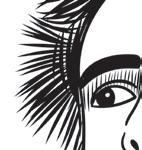
FACT: Although left-handed, John Lydon plays guitar right-handed, after being injured by outraged monarchists in 1977.

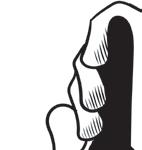



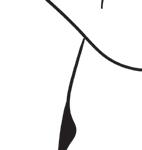



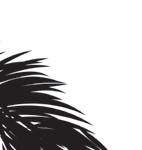


FACT: Bowie gave up his 50-a-day cigarette habit in 2004.
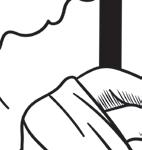




FACT: Brandon Flowers had an epiphany at an Oasis concert, and realized that fronting a rock band was his true calling—leading to a furious search for like-minded musicians, during which he discovered an ad by guitarist Dave Keuning.
KURT
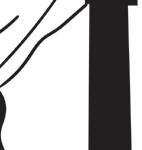
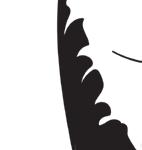
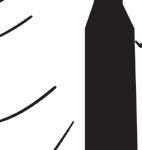



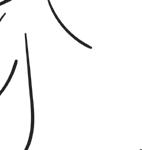
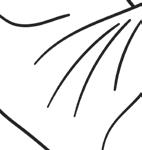

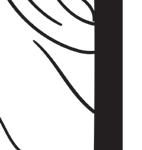
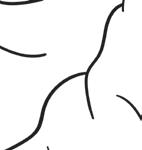




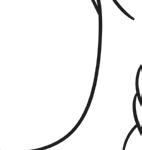
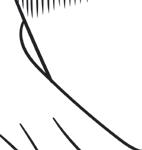



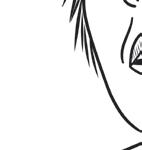
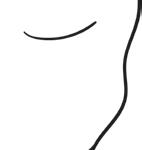







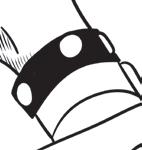


FACT:















FACT: Kurt Cobain was the top earning dead celebrity in 2006.

DAVID BOWIE
“You would think that a rock star being married to a supermodel would be on the greatest things in the world. It is.”
COBAIN
“If I went to jail, at least I wouldn’t have to sign autographs.”
PRINCE “You can always renegotiate a record contract. You just go in and say, I think my next project will be a country-and-western-album.”
Prince was a vegan.
JOHNNY ROTTEN
“I see no problem admiring the Bee Gees and being in the Sex Pistols.”
KATE BUSH
“I don’t like to live in the glary of publicity.”
“Life goes so much slower when you're taking it as it comes.”
Fashion designers often find muses in socialites, actors and, of course, musicians. Crafting a unique and distinctive appearance can become inseparable from an artist and their music if the partnership is just right. Sometimes that creates lifelong friendships à la Halston and Liza Minnelli. Sometimes a look catapults both the designer and star into another stratosphere, as happened with Jean Paul Gaultier and Madonna when she wore the French designer’s instantly recognizable cone bra that simultaneously redefined their images at the time.
A decade music and fashion became incredibly intertwined was during the punk movement of the 1970s, when sound and style worked in tandem to transform the era. The Sex Pistols were catalysts of the anti-establishment attitude that captured the zeitgeist—and so was the designer integral to the band’s bad-boy image, Vivienne Westwood. The late, great, grand dame of punk fashion opened her landmark Sex boutique in 1974 with her then-partner, Malcolm McLaren, who was the band’s manager. Her shop’s style was all about distressed designs, biker jackets, zippers and graphic tees, all of which would go on to define the style of the punk movement. Her most memorable design was the “God Save the Queen” T-shirt featuring a safety pin across Queen Elizabeth II’s face. The piece served as art for The Sex Pistols’ single by the same name and is still used on graphic tees today.
On the other side of the pop culture spectrum, the ‘70s also brought out the greatest hits between designer Bob Mackie and superstar Cher. The pair first met on the set of The Carol Burnett Show in 1967 and went on to collaborate on looks for the Sonny and Cher Show as well as several of the star’s headturning Oscars gowns and most iconic red carpet moments, including the feathered and sequin “naked” dress she wore to the 1974 Met Gala (the showstopper also landed on the cover of TIME). Mackie’s glitzy showgirl creations were shocking and scandalous, and in bold and fearless Cher he found the perfect muse.

Another star who was unapologetic about her image was Madonna. As her looks evolved with each stage of her career,

she met her match with French designer Jean Paul Gaultier and his iconic cone bra. The Queen of Pop first wore the pointed bustier in 1990 on her Blonde Ambition tour and consistently revisited the style staple throughout her career— she's even bringing it back for her world tour this year. The cone bra went down in history as one of the greatest looks for both Gaultier and Madonna, amplifying their fame and images.


When hip-hop emerged onto the scene, fashion and music intertwined in a different way. The style was heavily concentrated on customization with an emphasis on popular luxury brands—and nothing was more coveted than a custom creation by Dapper Dan. He was a streetwear pioneer who rose to fame after opening a boutique in Harlem in 1982 and dressing Bobby Brown, LL Cool J, Big Daddy Kane and Salt-N-Pepa. Dan would remix high-end monogrammed materials from Fendi, MCM, Louis Vuitton and Gucci into his one-of-a-kind looks. Although his appropriation of the trademarked fabrications and logos led to litigation, he was eventually celebrated for bringing high fashion to the genre and he even went on to partner with luxury brands, including Gucci in 2017.

Hip-hop stars became fashion moguls in their own right, building empires like Sean John by Diddy and Phat Fashions by Def Jam Recordings co-founder Russell Simmons. These lines put hip-hop on par with respected fashion houses by snagging spots at New York Fashion Week and accolades, such as when Diddy won the CFDA Award for Menswear Designer of the Year in 2004. Today, it’s commonplace for musicians to create their own labels, but pioneers in the ‘90s and early aughts set the stage, so to speak.
Cut to Beyoncé teaming with adidas and Rihanna for Puma. Both performers also created their own mega-brands, Ivy Park and Fenty, respectively. In 2019, Rihanna became the first woman and person of color to launch a luxury label with LVMH with Fenty.
There are some brands that had musicians connected with their images from the start. Take Versace, for example. From Gianni Versace’s launch of the label in 1978 to his sister Donatella’s reign today, the brand has been beloved by rockers, rappers, and pop stars alike. The biggest names in music—Elton John, Prince, Courtney Love, Madonna, Jennifer Lopez, Christina Aguilera, Lil’ Kim, Missy Elliott, Lady Gaga—have all starred in the house’s brand campaigns.
From Dior Homme to Saint Laurent and Céline, the French photographer and couturier Hedi Slimane has continued to show his love for musicians across his tenures at fashion houses. The multihyphenate kickstarted the “Saint Laurent Music Project” to pay homage to the house’s everlasting relationship with rock icons. He recreated the looks Yves Saint Laurent made for Mick and Bianca Jagger’s St. Tropez wedding in May 1971.Throughout the project, Slimane photographed Courtney Love, Kim Gordon, Chuck Berry, Marianne Faithful and folk legend Joni Mitchell. Now that Slimane has moved on to helm Céline, he remains committed to the rock 'n' roll lifestyle, tapping none other than folk-rock icon Bob Dylan to lead its newest campaign.


Other designers finding muses in musicians include Alessandro Michele, who just left his creative director role at Gucci. While at the label, he collaborated with Harry Styles on his own capsule, dubbed HA HA HA. Louis Vuitton also recognized the benefits of putting a beloved musician at the helm. In February, the fashion house announced that musician Pharrell Williams would take the reins as its new creative director of menswear.
A harmonious chord is struck when a musical artist meets a designer that creates looks that synergistically pleases both the eyes and ears. And when done right, both the designer and star amplify one another to new heights. When fashion and music collide, magic happens.




